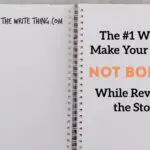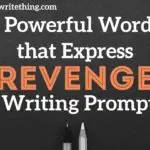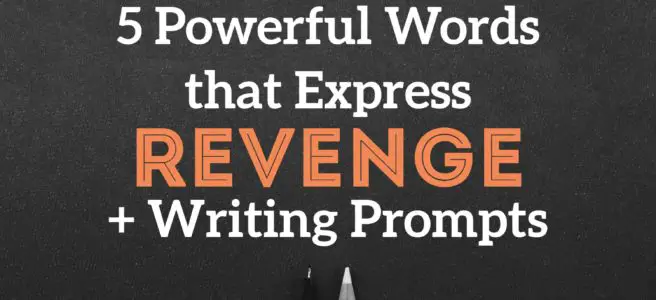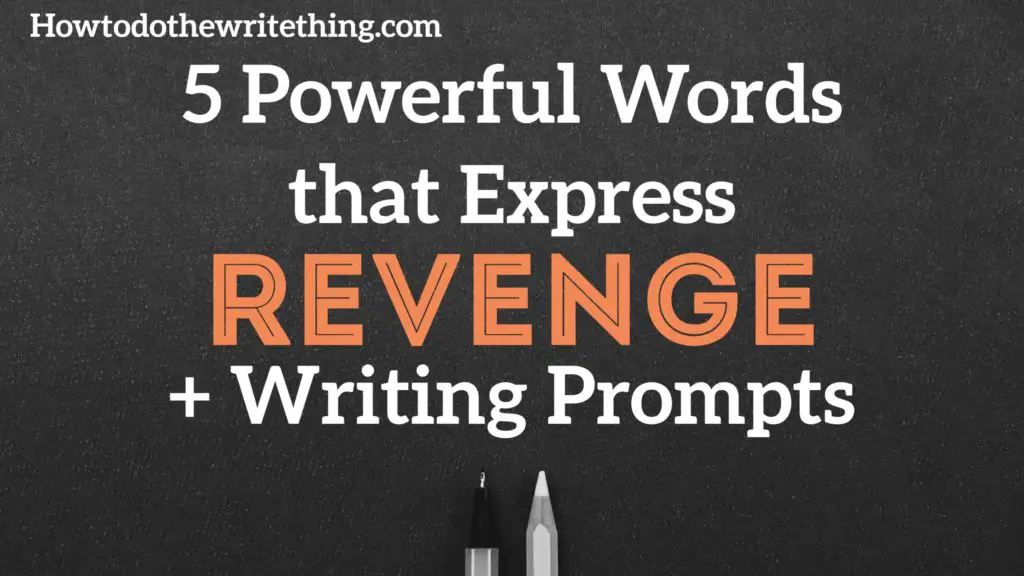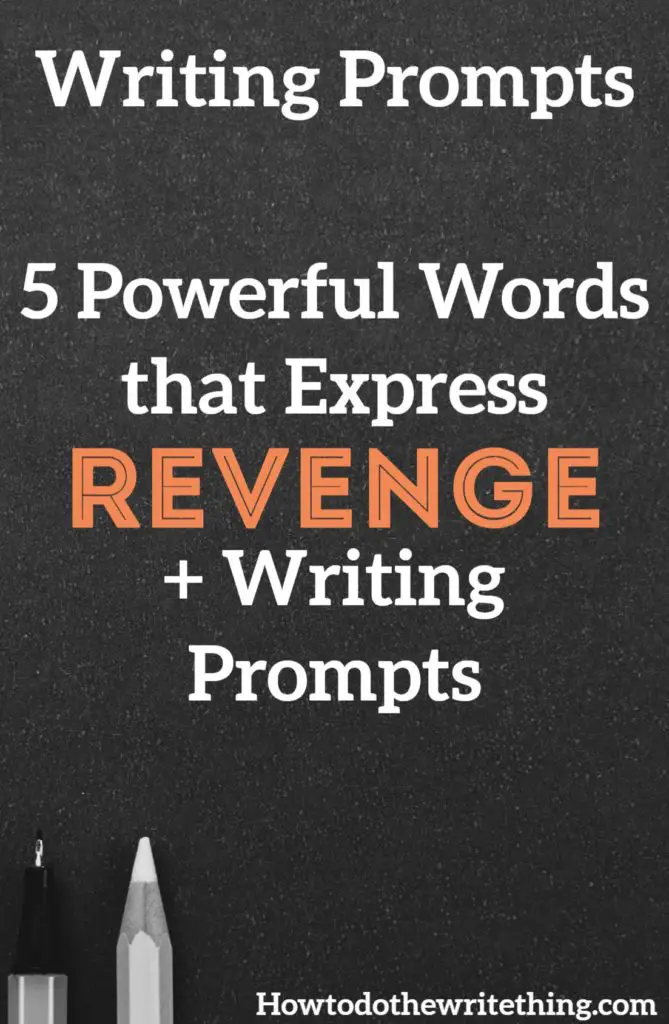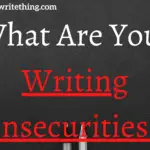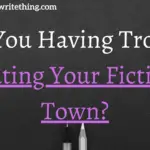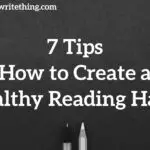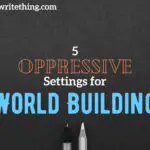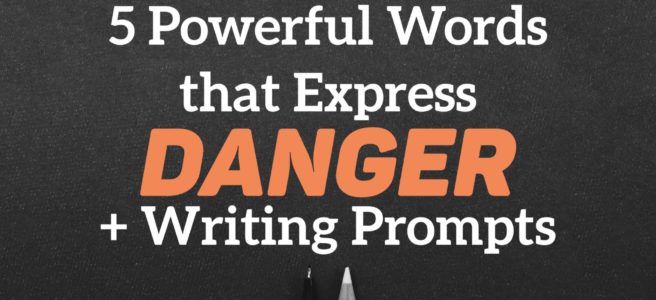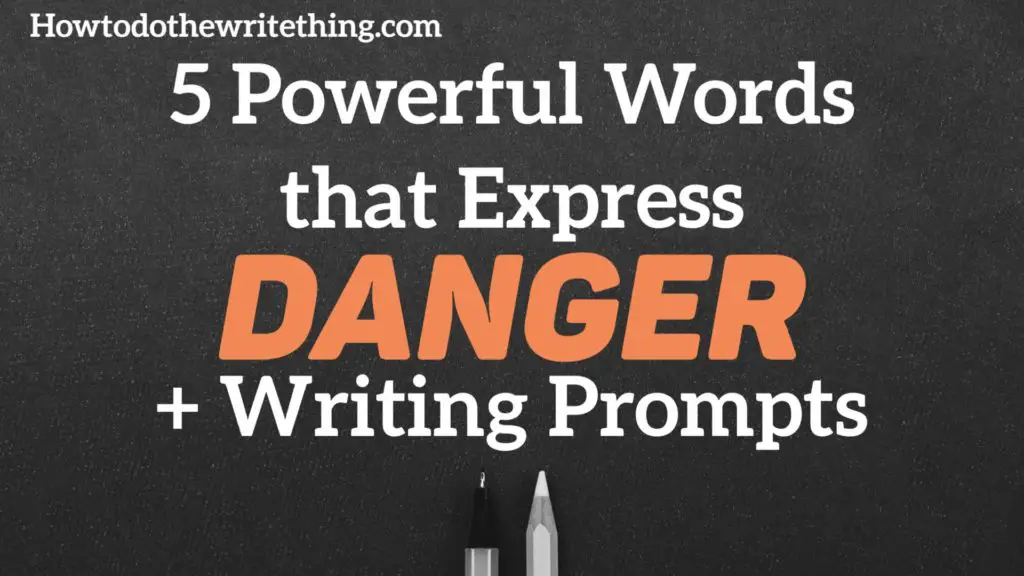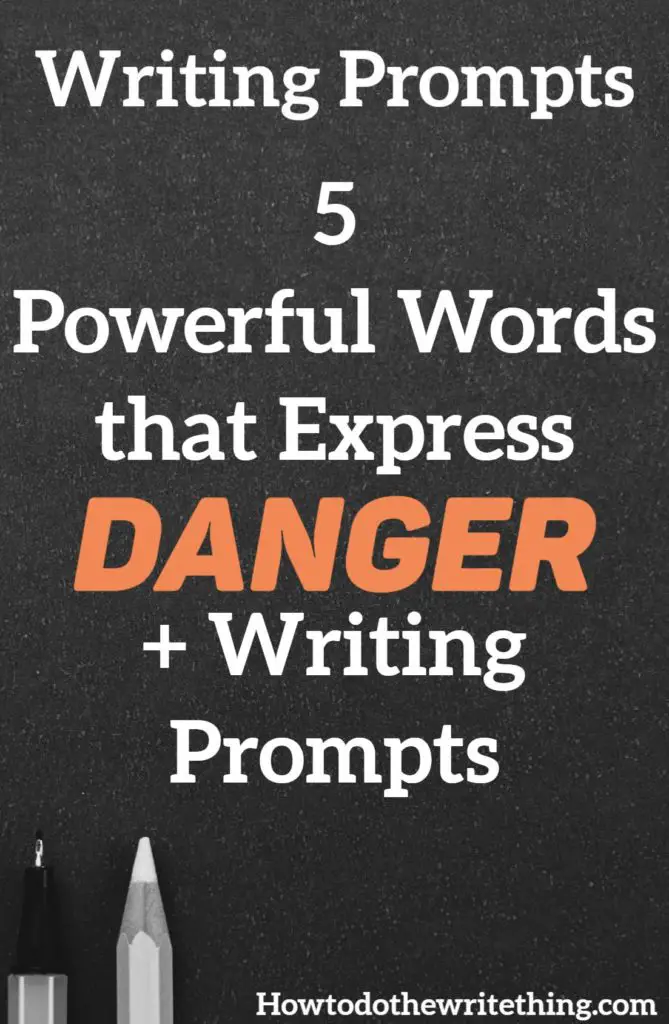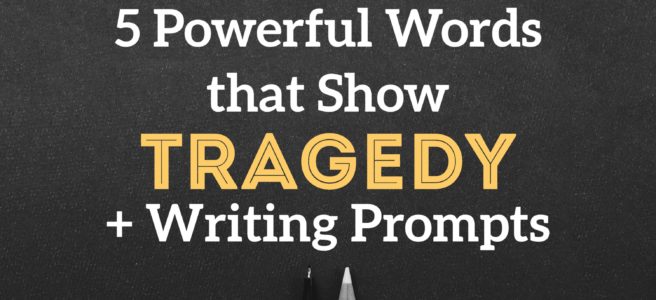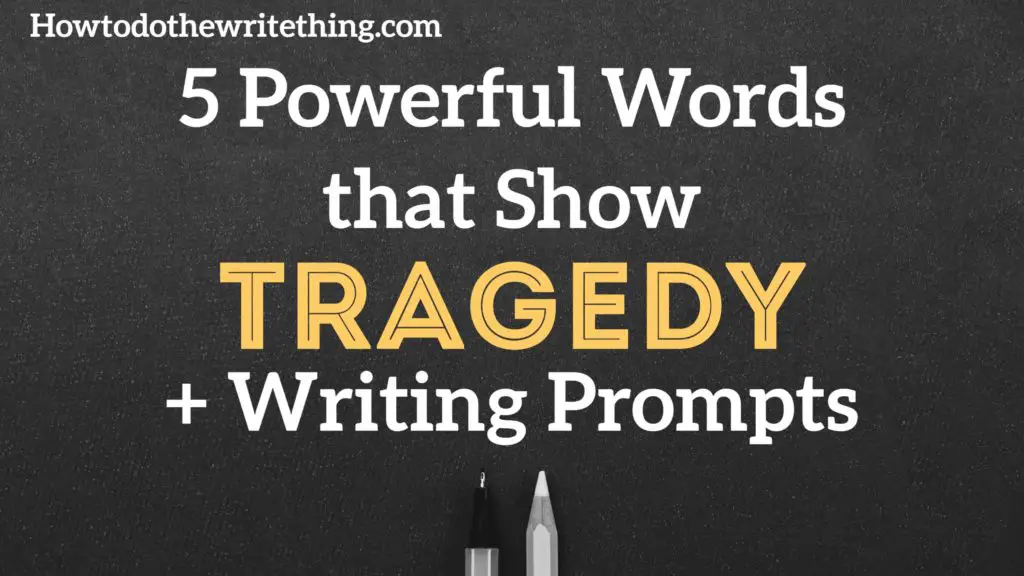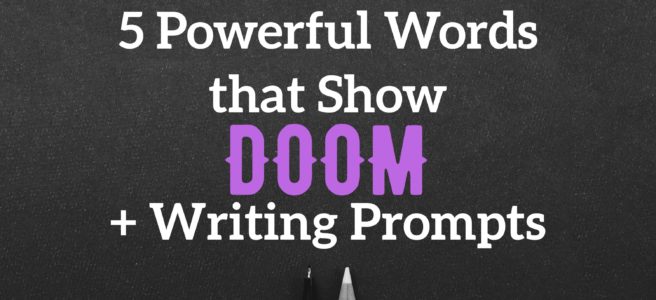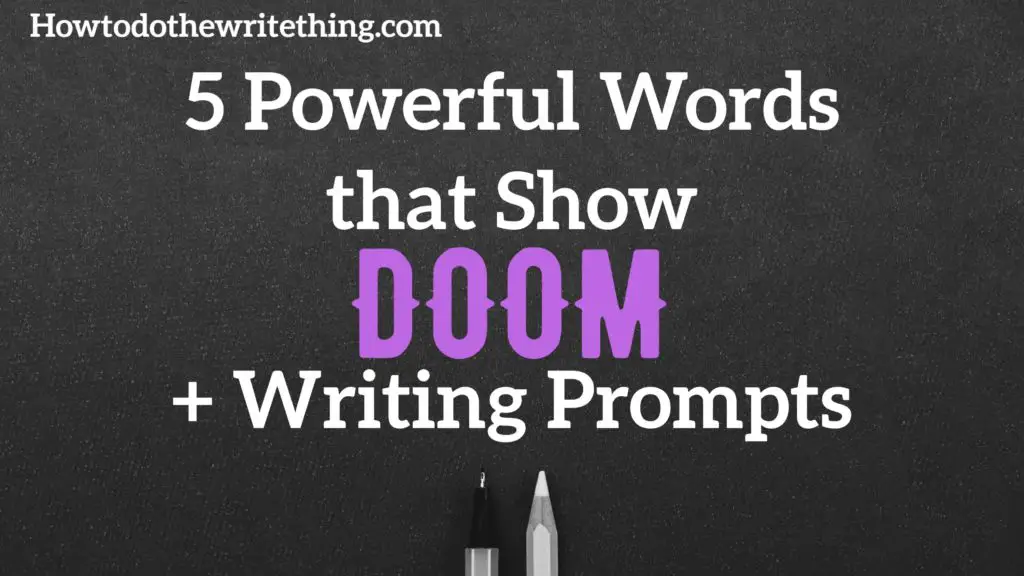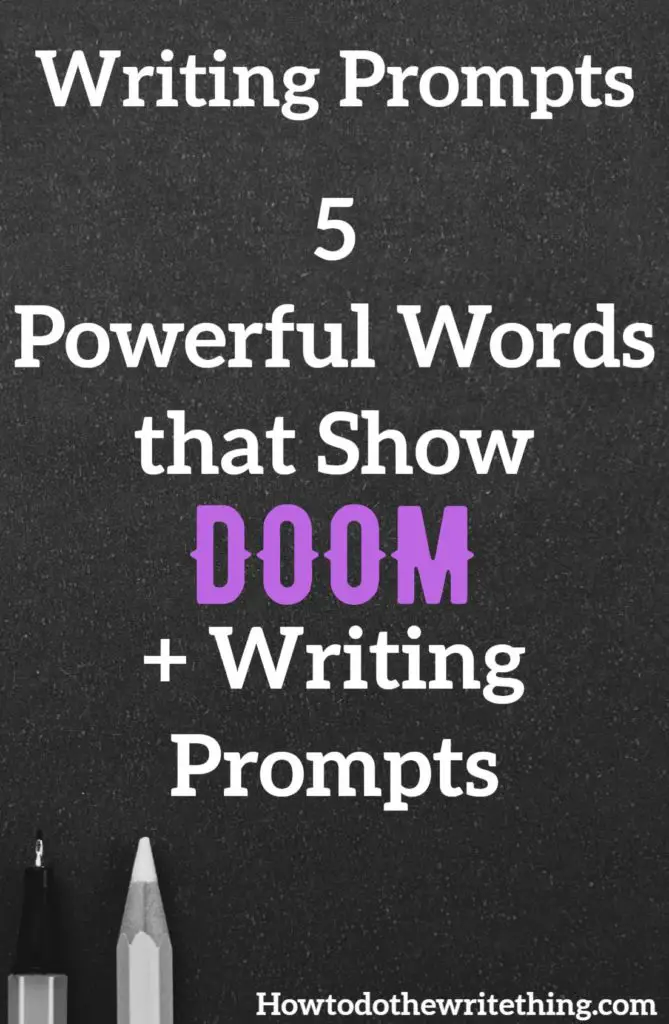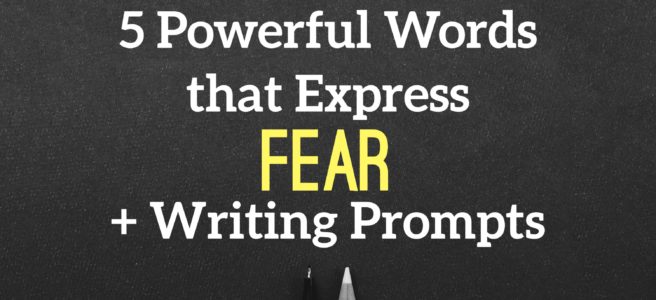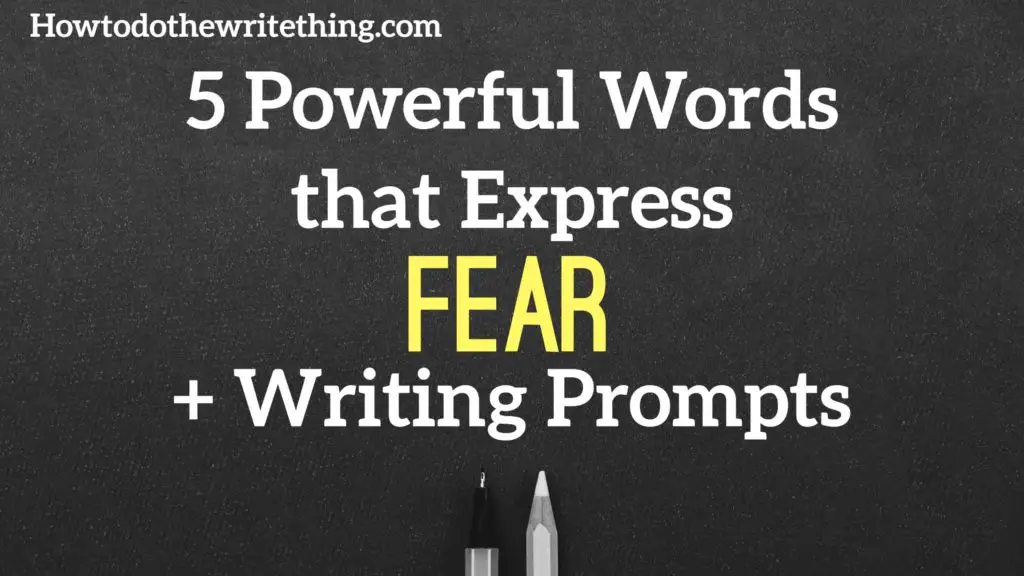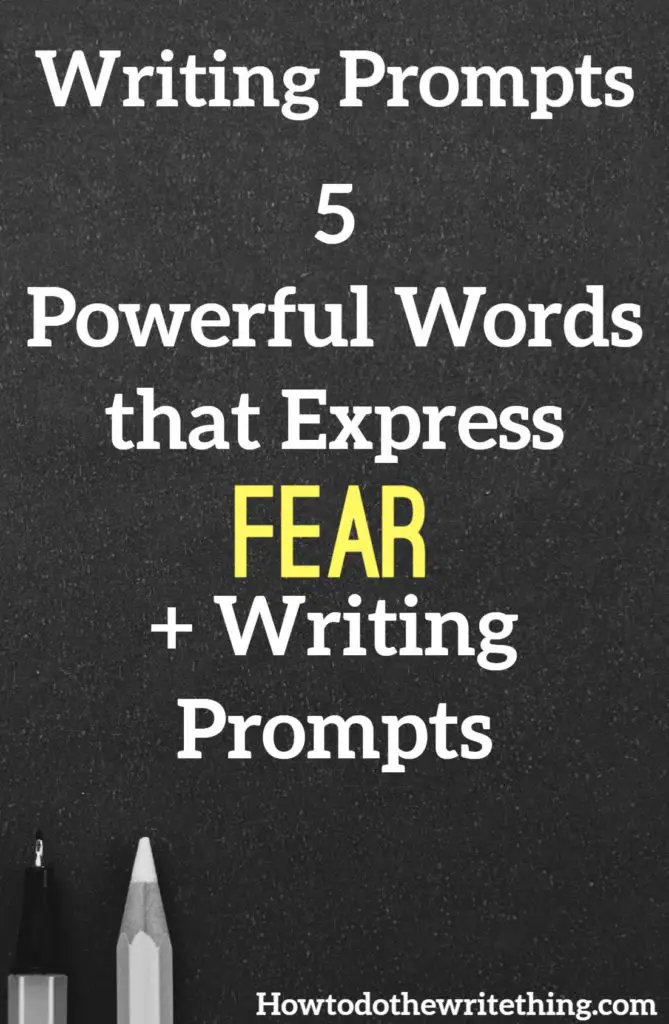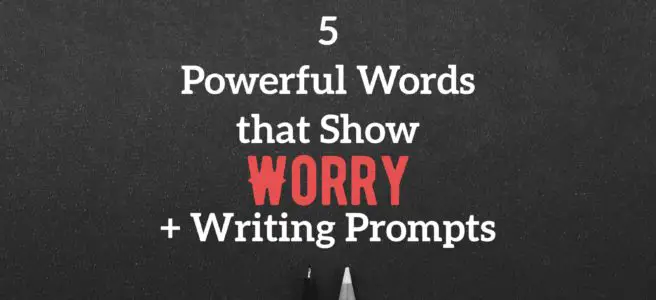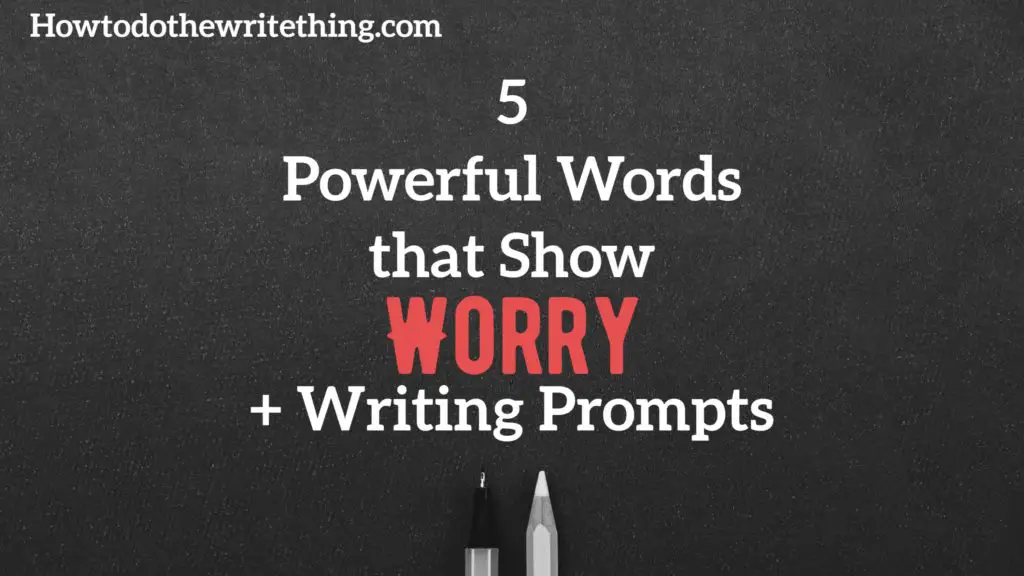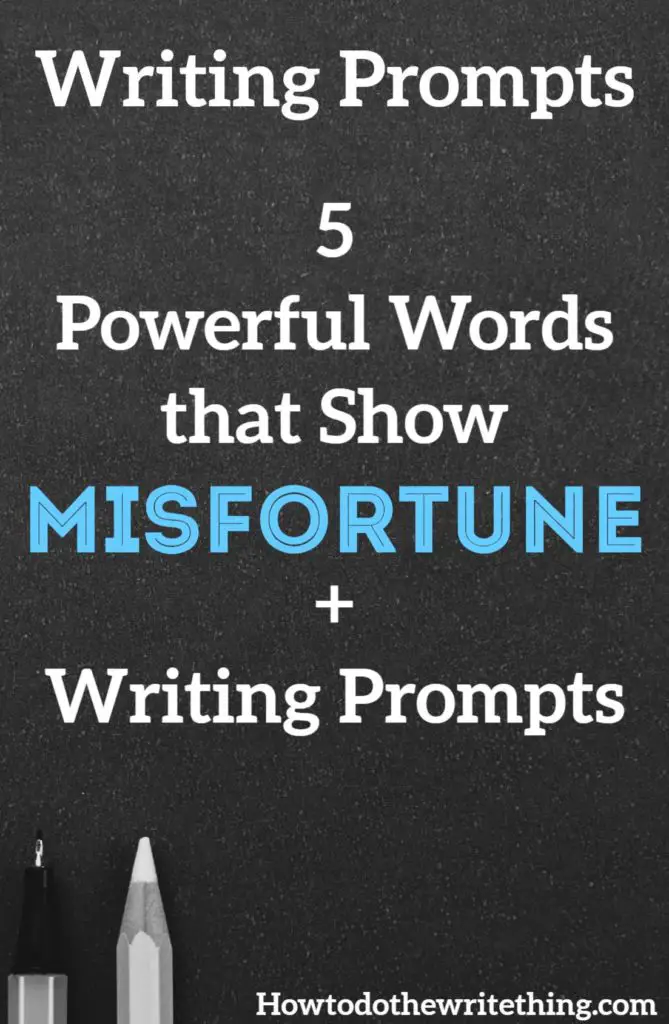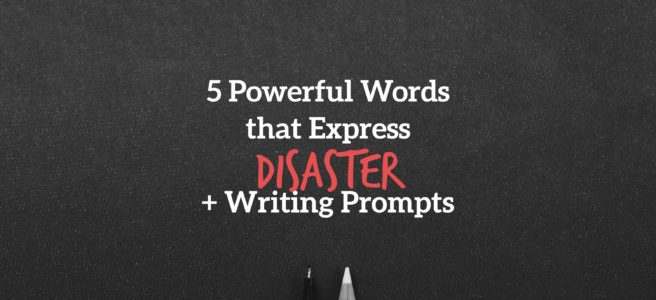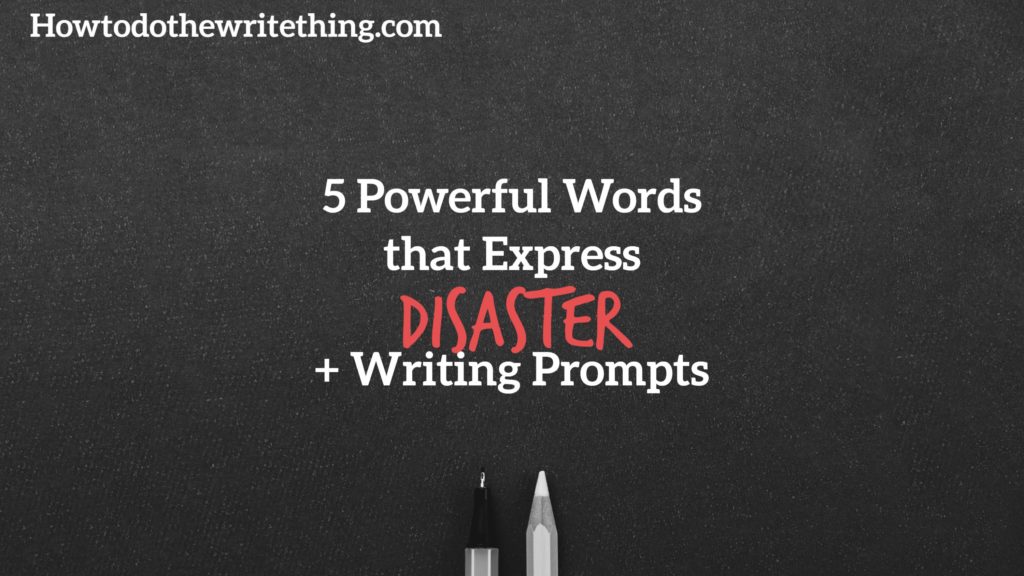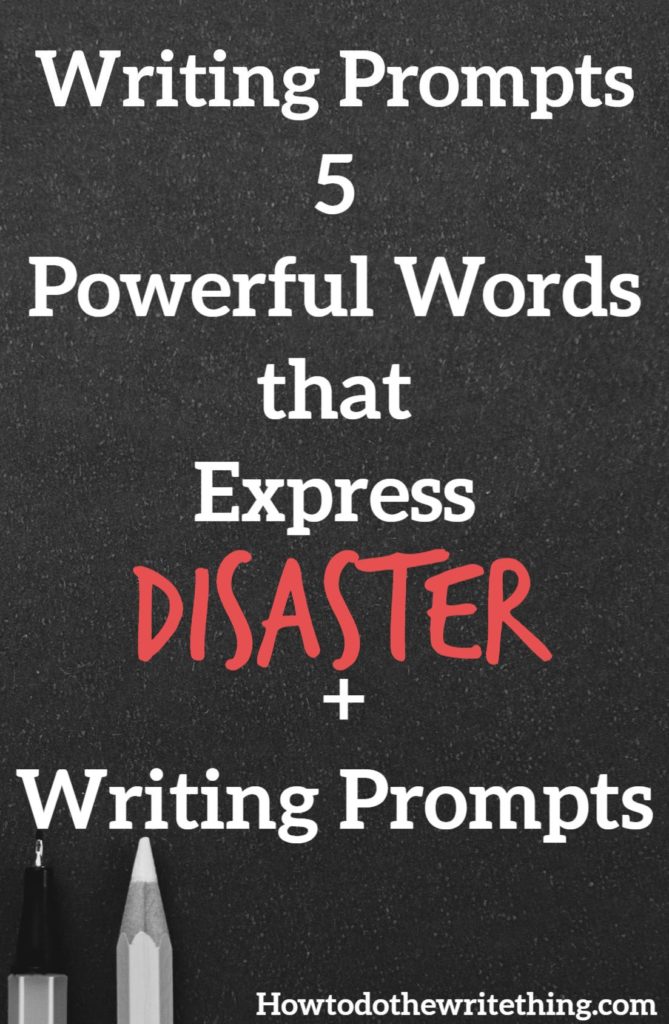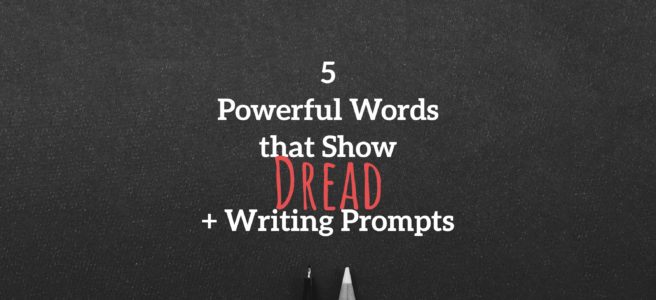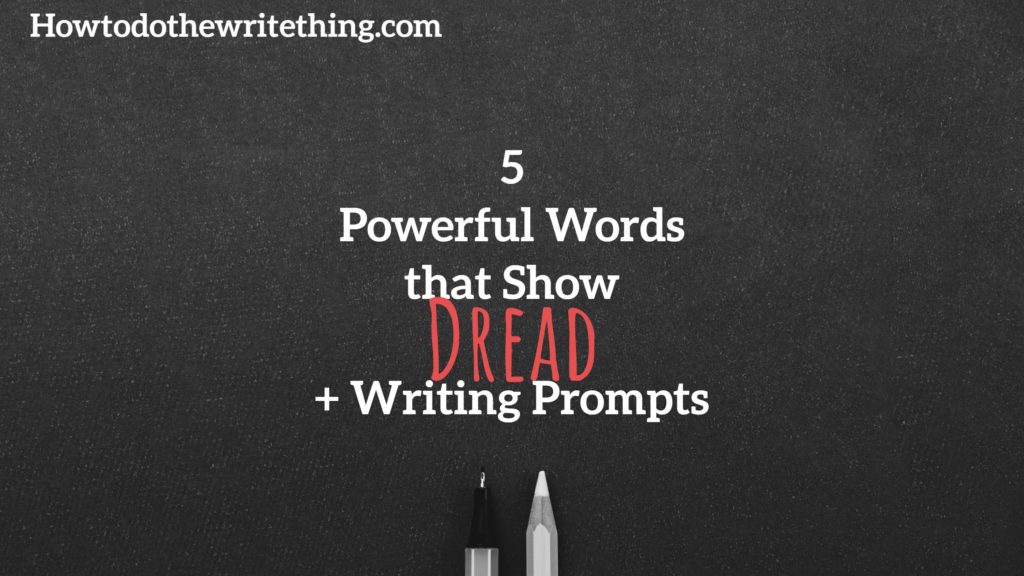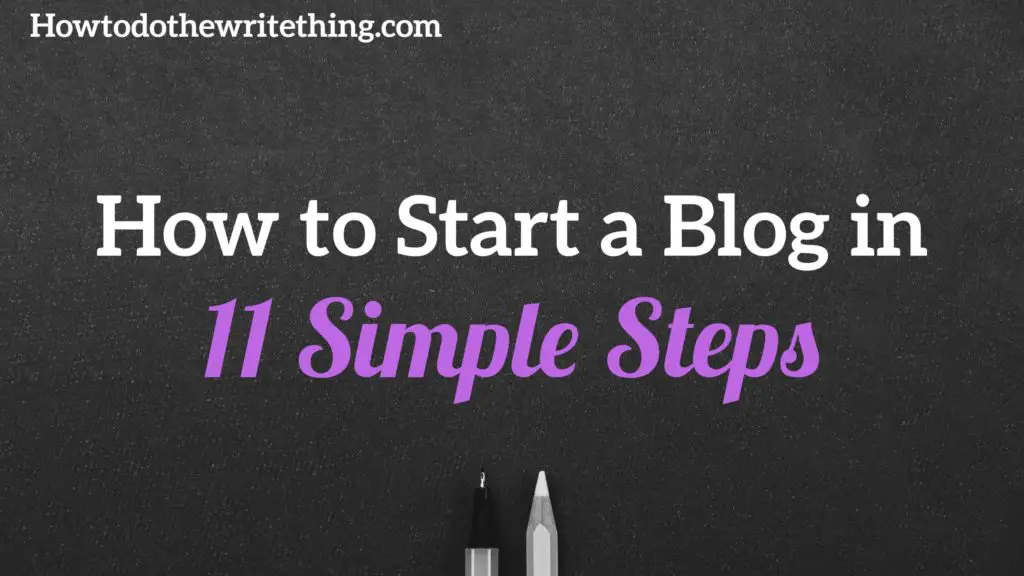
How to Start a Blog in 11 Simple Easy Steps
If you are still “on the fence” about starting your own blog to make extra money you should read this first: Why Even Start a Blog?
If you’re interested in the fast track on how to start a blog see the FAST TRACK below:
If you still want more help on starting your own blog skip the fast track for now and come back to it when you are ready 🙂
FAST TRACK on how to start a blog:
First, if you are going to start a blog that you can make money with, you will want a host site and you will want to own your domain name.
I use and recommend Bluehost. They are inexpensive and EXTREMELY beginner blogger friendly. You may want to pay more later on depending on your blog needs, but for starting a blog Bluehost is a great and inexpensive choice to start a blog. (I currently use them for blog hosting. I may create a pros and cons list for Bluehost blog hosting later on. Stay tuned 🙂 )
Bluehost has an easy one-click install of WordPress. WordPress is used by over ⅓ of all sites on the internet. It is well established and thus easier to figure out than other sites.
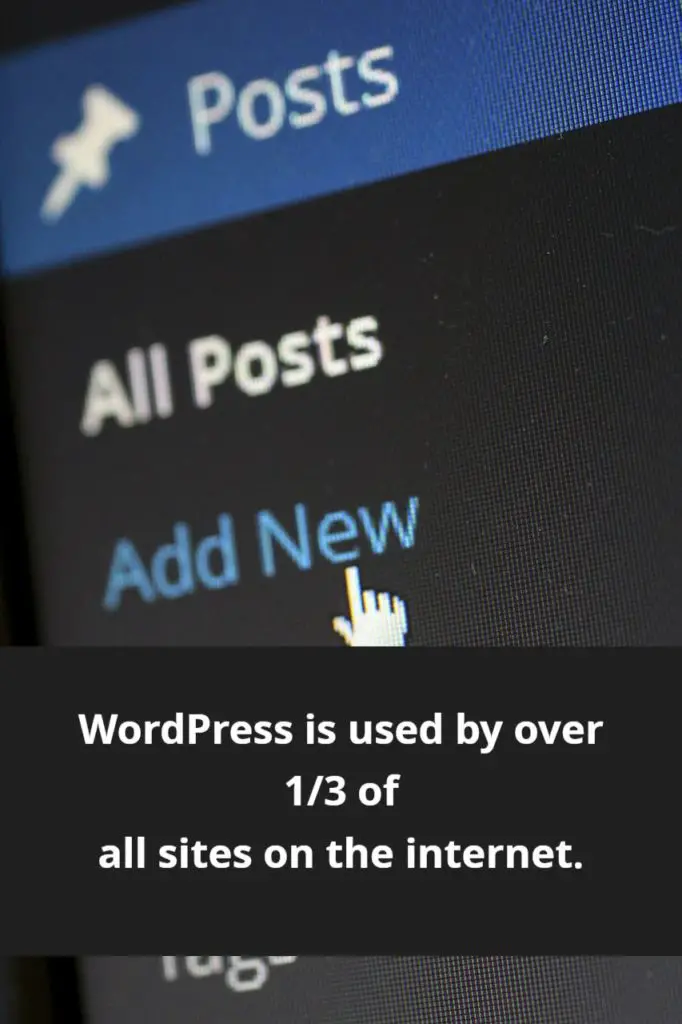
Bluehost makes it incredibly easy to start a blog and get your blog running.
If you picked Bluehost all you have to do is one-click to install WordPress. Then you choose a WordPress theme and you’re well on your way to learning how to blog!
If you are learning how to start a blog for fun or ESPECIALLY if you are considering making some passive money on the side while blogging you are going to need the right tools in your blogging toolbox. I recommend Bluehost to host your site. I personally use it and Bluehost is still one of the top web hosting companies and you can start your own blog with them for as low as $3.95 a month (It’s normally $7.99 a month, but they have a promotion to get you that rate for up to 3 years hosting with them)!
You can choose a different site to host your blog but they offer your domain free if you purchase a 12 month or longer hosting plan (this will save you at least $15 on your initial purchase). I recommend doing the 36-month hosting plan through Bluehost (because that’s the best deal and that’s what I did, and I’m very pleased with it) even if you’re not planning on monetizing your blog because if you really love blogging you never know when you might decide to monetize and at that moment you’ll be happy you decided to host and have your own domain.
Having your own site that looks more professional to affiliate programs and readers. You will be able to have a better following and at any moment you will be able to decide to monetize through ads and affiliate marketing.
Some of my blogging mentors had their blogs going for years before they decided to monetize. You just never know, so you might as well start off on the right foot.
Bluehost is affordable and you can save yourself a lot of money by signing up for at least 12 months. Plus, if you want an even better deal, your best value would be purchasing a 36-month plan (that’s what I did, I like the best deal.) With the 36 month plan, your monthly rate is WAY lower over the long run. So you have options. Do what’s best for you and your specific situation
For me personally, I started with Bluehost (36-month plan) and WordPress right from the start because I enjoy work from home and being my own boss. Online jobs are growing and this is one way to pay yourself and work when you want. You’ll be glad you did. I’m glad I did.
Use this link: “Bluehost Link” and you’ll see-
- Free Domain Name for 1st year
- FREE SSL Certificate Included
- 1-Click WordPress Install (this saves a lot of complication)
- 24/7 Support
- Get 36 months at $3.95 a month instead of $7.99 (That’s a saving of at least $145!)
- Plus * Intro offer and 30-day money-back guarantee (FYI, the 30-day guarantee does not include the domain name, so if you request a refund they will charge a fee. It wasn’t a problem for me, but I just wanted you to know and be aware)

End of FAST TRACK on how to start a blog.
Now, on to the meat and potatoes.
This is an extensive guide on starting a blog, so please enjoy 🙂
How to Start a Blog in 11 Easy Steps
- Choose your Host Site
- Choose your platform The Fun Part 1: Choose your Domain Name
- The Fun Part 2: Choose What You Know Well and Find Interesting to Write About
- Choose your Platform
- Next, You’ll Want to Design Your Blog
- Create Necessary Pages (Contact, Home, About Us)
- Create a Publishing Routine
- Make Sure to Create Great Photos That Feel Professional
- Devise a Strategy that Will Make your Content POP!
- Learn to Promote your Content Through as Many Channels as Possible (Without Being SPAMMY!)
- Learning How to Become a Blogger Takes Work (Don’t Be Fooled. This is NOT a “get rich quick” scheme)
- BONUS: Plugins We’re enjoying
How to Start a Blog–
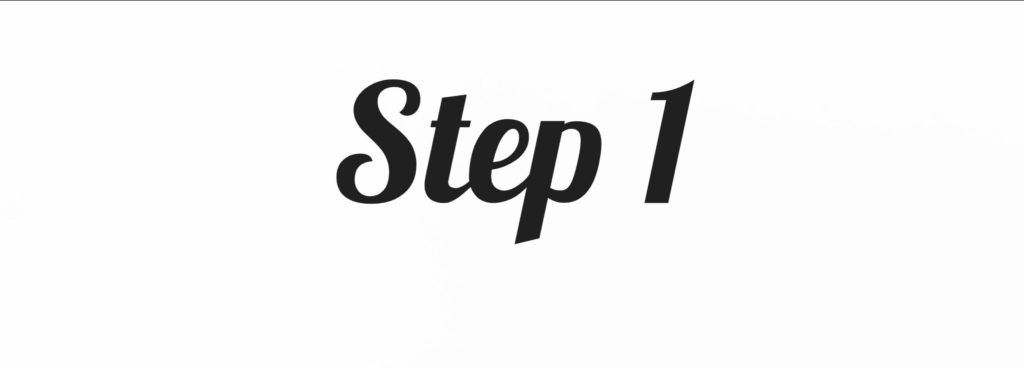
1. Choose your blog host
As you know We recommend using Bluehost. I’m going to show you real quick the process and how simple it is to get your blog started on Bluehost so you have something to look at and have an idea. If you want, you can jump over to their site right now through this link: “Bluehost Link” (Where you will see the low hosting cost of $3.95 a month and a free domain name for your 1st year) and as we go step by step you can take action on your brand new blog as we go through the guide.
They have a 30-day money-back guarantee, so you can always start today. Try it out for a month to see if it’s a good fit for you and if not, get your money back, no risk to you. (fyi they don’t refund the free $15 domain name as you now own it for the year.)
There are other host sites to choose from but we recommend this one for starting out as a blogger.
After you click the green get started button you choose a plan that works for you:
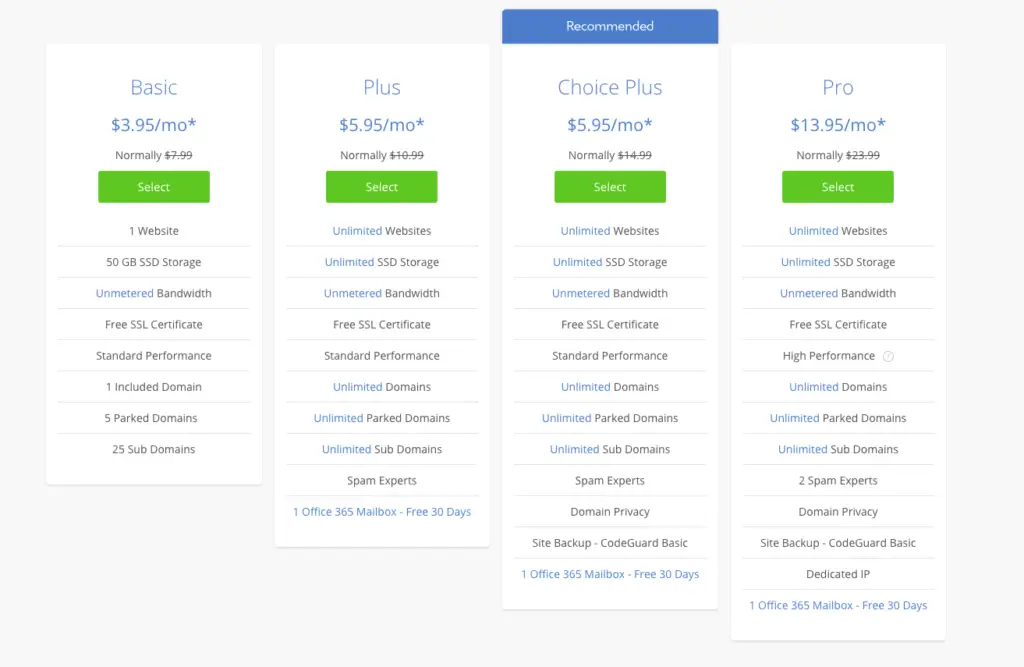
Most beginners would be fine starting with the basic plan and we recommend the 36-months as it’s the best deal.
Next you’ll pick a domain name:

We go into more detail below about choosing a name.
Then you’ll put in your information:


Next is the payment info:
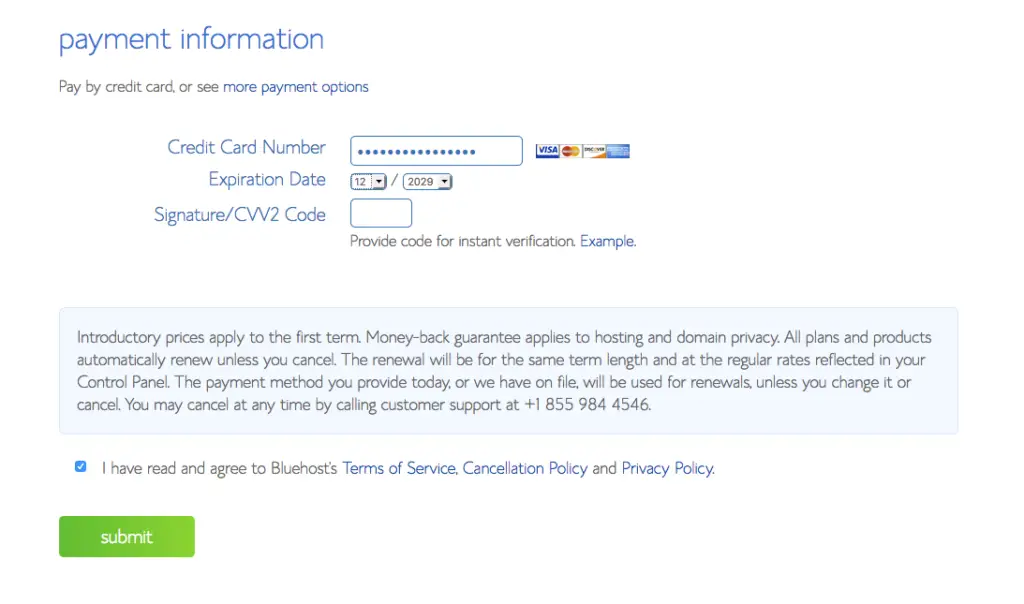

Pick the package that’s right for you. We went with the 36-month because it’s the best deal and that’s what we recommend for you. Again don’t forget about the 30-day money back guarantee so that you can get started with no risk.
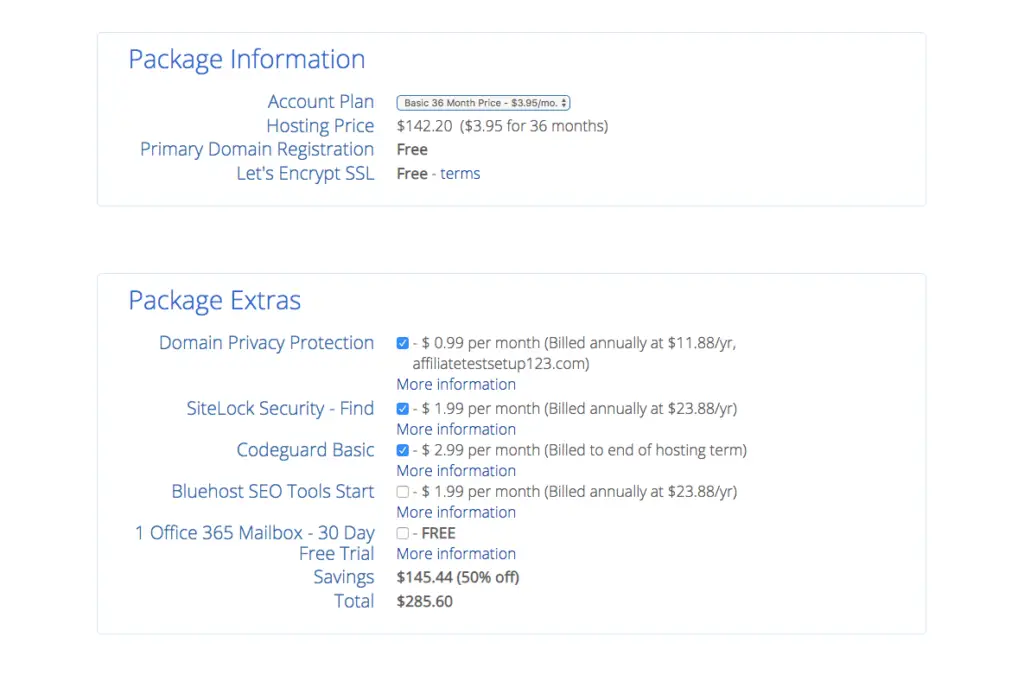

We wouldn’t say that you need to get sitelock and codeguard until later, but domain privacy protection we recommend getting.
Then create your new password and login:
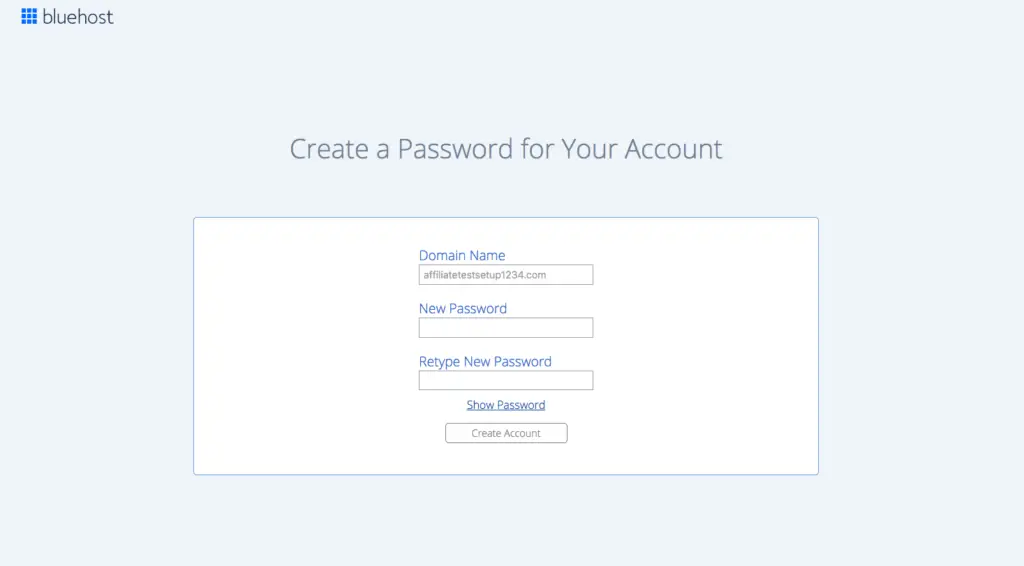

Remember: once you’ve paid you still have 30 days to try things out with no risk to see if this is a good fit for you 🙂
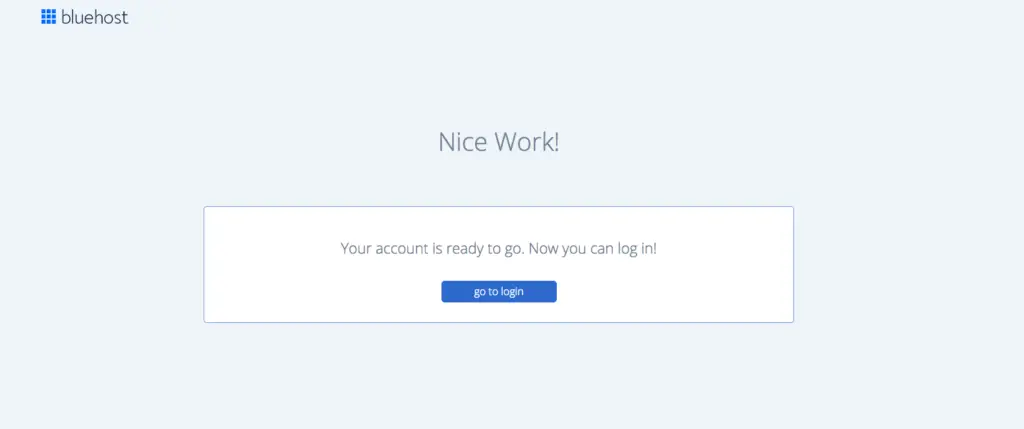

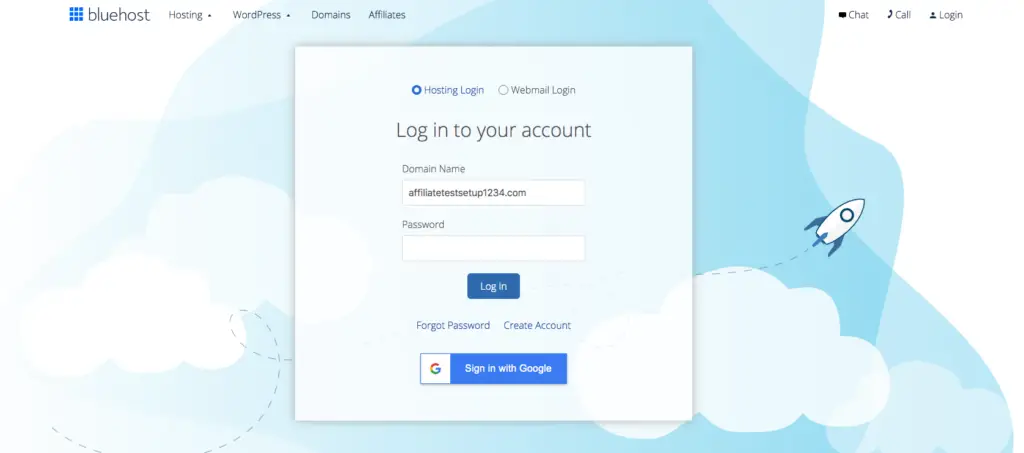

Name your website. This is different than choosing a domain. Your domain might be eatmorecake.com. But your site name might then be Eat More Cake. You also will choose your tagline. For your tagline, it’s good to come up with a tiny simple sentence that makes your site’s purpose clear.
Name: Eat More Cake
Tagline: Learn How to Bake the Best Cakes in the World.
Something like that.
For example of what this might look like you can see our Name and Tagline at the top of this page right now 🙂 ^^^
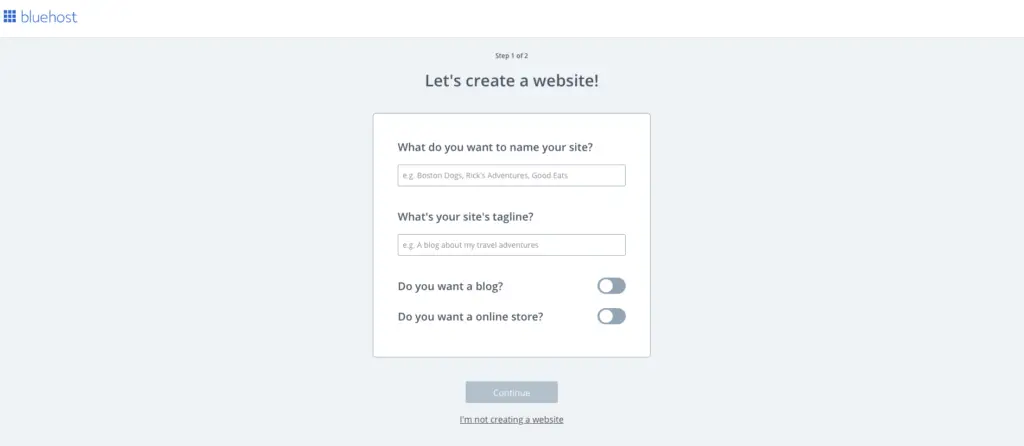

Tell Bluehost more about the goals of your website so that they can help you:
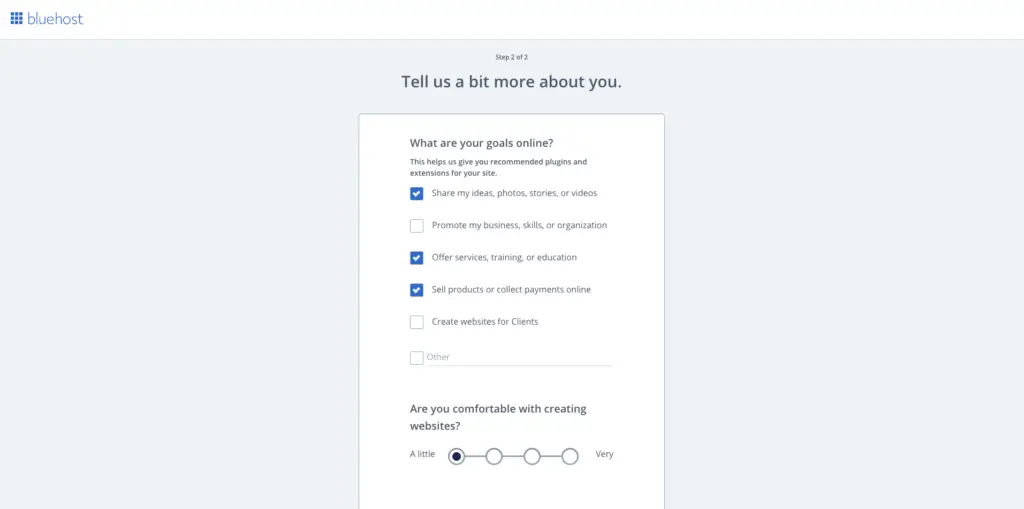


Be honest about whether you are knowledgeable about creating sites so they can give you tips and help along the way.
Pick a theme:
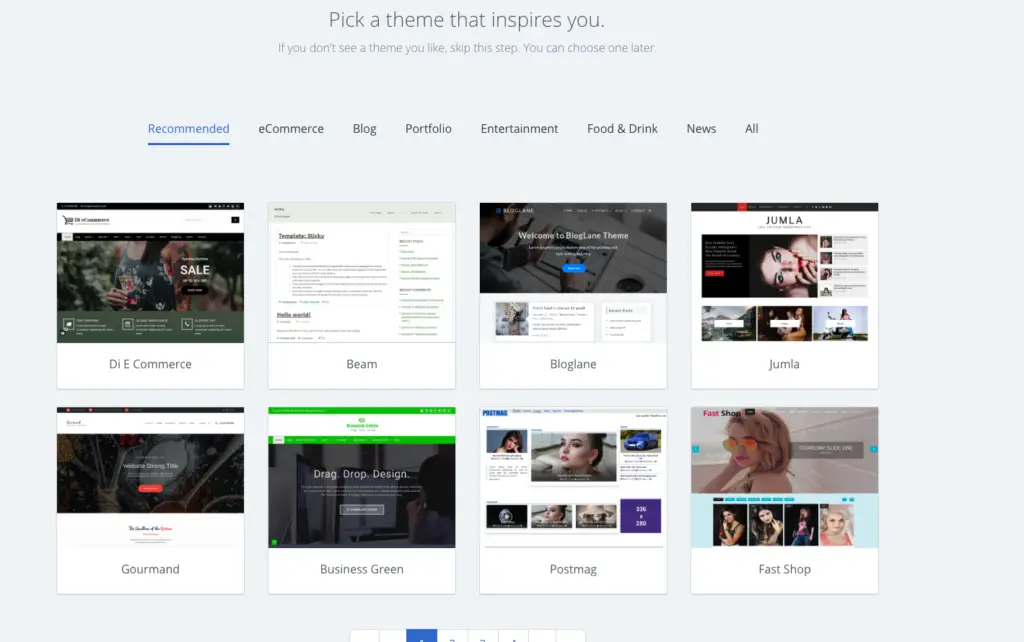


More details on picking a theme below, but don’t be afraid to try many since you can change them fairly easily before making your website go live.
It is recommended by some bloggers that you buy a theme as they are more secure than free ones, but that is up to you.
After you choose a theme you can install WordPress easily with one click:
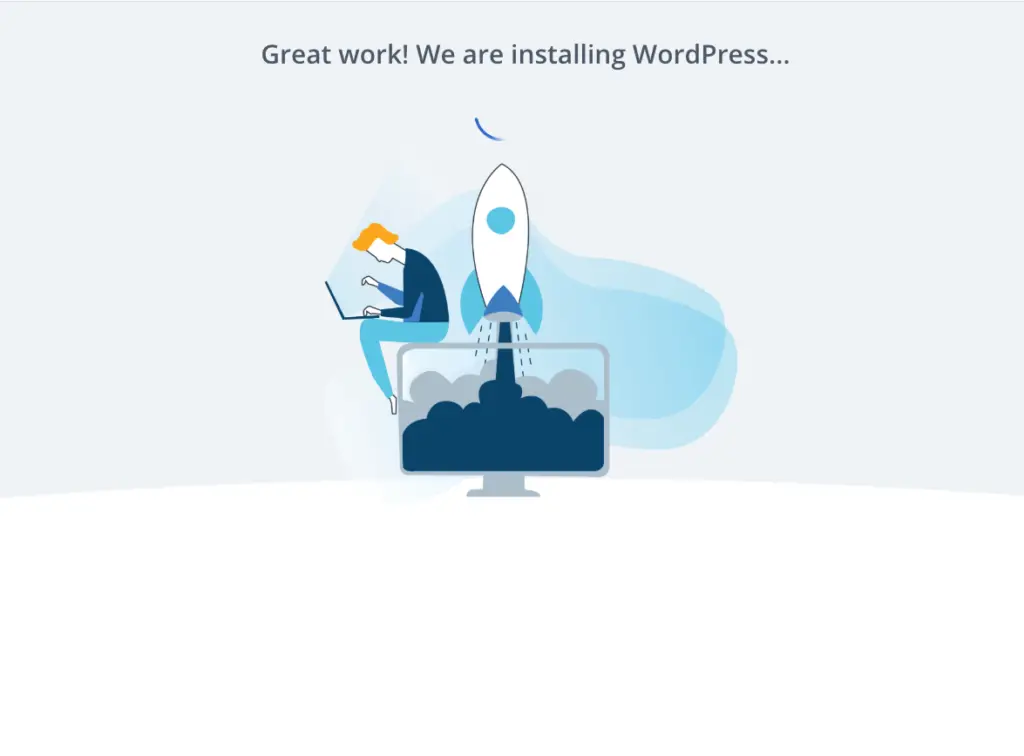


I love how easy it is to use WordPress with Bluehost.
Now you can click over to start building.
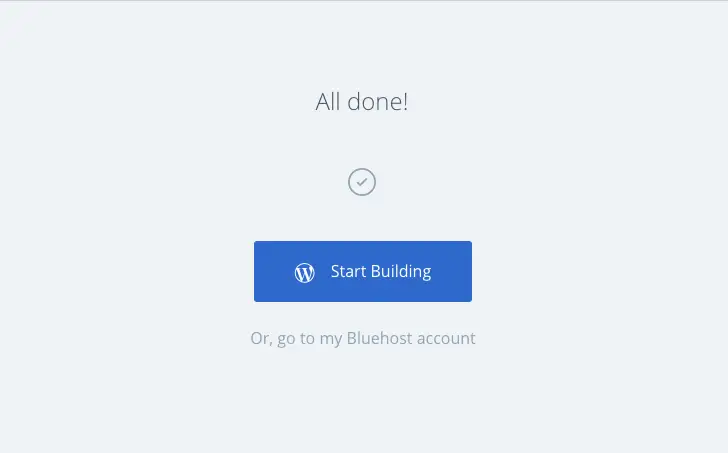

Now you are able to sign in to your Bluehost account and you can click the log in to WordPress blue button to really get started.
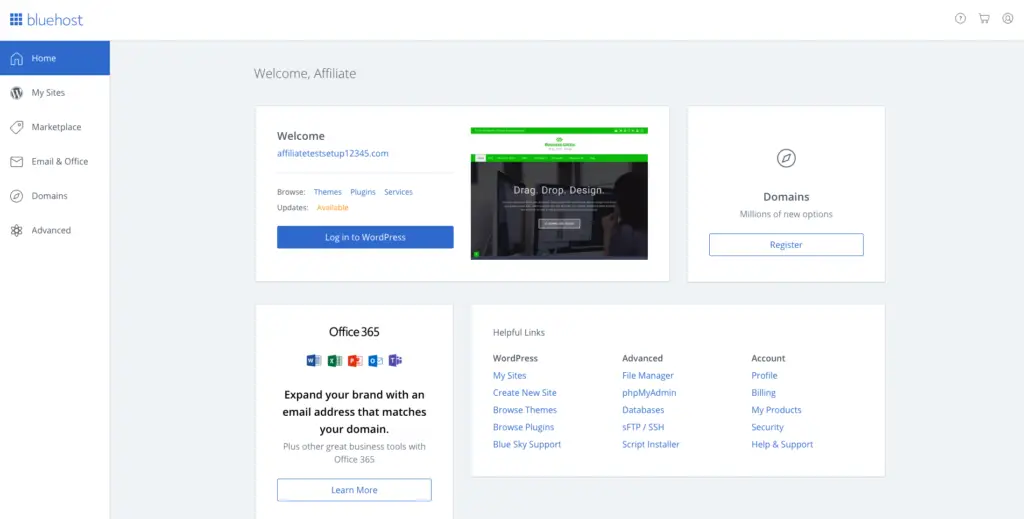

This will lead you to the back end of your site where you have access to your WordPress tools and plugins. At the bottom of this post we recommend some plugins for you to try out.
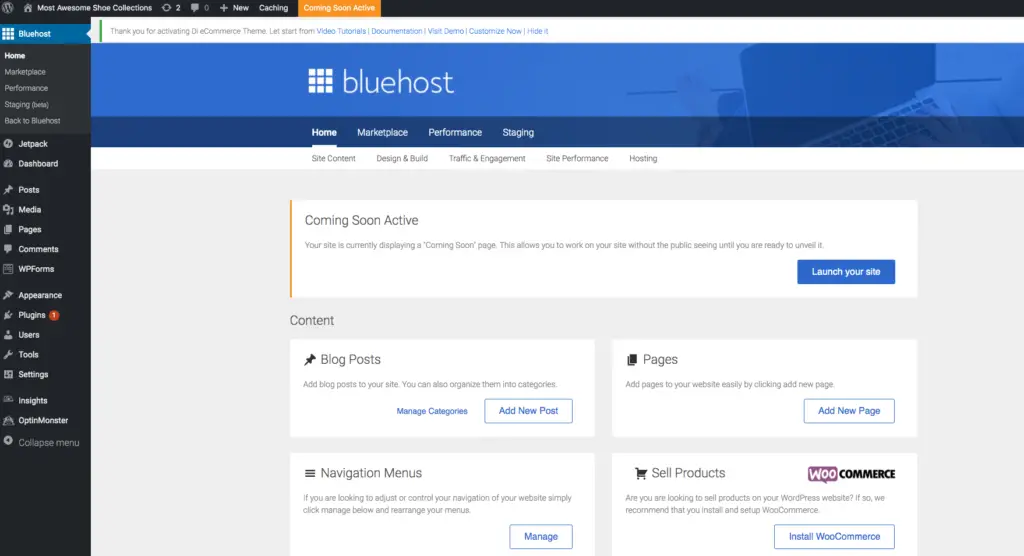


This is what you can expect and how easy it is to own your own domain and WordPress site through BlueHost.
Next we will go more in depth about starting a blog.
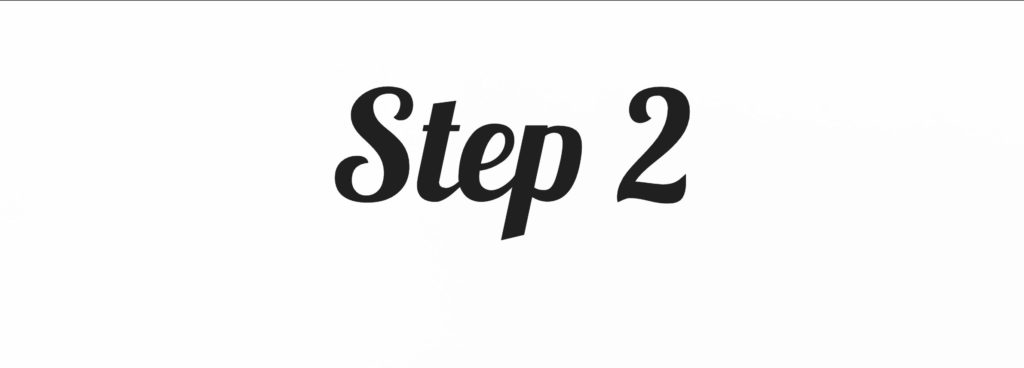

2. Choose your domain name for your blog 🙂



For me, as a creative, this part is more fun than step one (choosing a host site for your blog).
It’s true. I’m a creative type. That means any time I get to brainstorm, innovate, or create I get pretty excited. I am only organized by necessity. (Being creative and messy is MUCH more fun )
Not everyone gets excited when learning “how to blog” or “how to start a blog” or “how to make money blogging” so I guess I’m sort of nerdy in that way 8) (and if you’re reading this maybe you are too 😉 )
When thinking about a domain name for your blog, try to think of something catchy, but not too long.
Think of something that is a play on words like “do the Write thing” instead of “do the right thing,” because at Do the Write Thing we write about writing and we want to help you do the right thing while you write!
We like writing and writing about writing so it’s fun all around!
Some “punny” play on word ideas to help your brain juices get pumping on how to start your blog and coming up with a creative domain name idea for your blog:
- Love everything Llama? No ProbLlama
- Like baking? You Bake me crazy!
- Inspirational? Have Beleaf in yourself
- Vegetarians? Give Peas a chance
- Selling lights? You Light up my life
- Still like baking? All you Knead is love
- Can’t get enough dessert? Get stuck on a dark Dessert highway. Or Welcome to my Dessert Island!
- Do you love Coffee a Latte?
- Writing about tea? Watch out for the Tea-rex!
- Writing about everything Irish? Irish I had an idea for you…
To choose a good domain name for your startup blog you’ll want to have a good idea of what type of content you want to create. Name and niche pretty much go hand in hand.
When thinking about creating content for your blog it is not all writing. In today’s internet culture it can be videos, pictures, how-to guides, etc. Pretty much any topic you can think of you can turn into a blog.
Do try to specialize in something.
You don’t want to be so broad that you write about anything and everything. You won’t be able to hold anyone’s attention that way.
You also don’t want to be SO specialized that you run out of topic material.
My suggestion is to do some quick research.
Look up topics you enjoy and are interested in blogging about for yourself. What are you passionate about that others may also be passionate about? Don’t just go for topics you think will make a lot of page views or money.
You might be one of the few that is passionate about pink poodles, but there are lots of dog lovers and if you think it might keep your interest you can start a blog for dog lovers and help dog lovers with there dog-loving needs with your blog.
It’s important to have some interest in what you are blogging about.
Readers will be able to tell if you like or know anything about what you’re blogging about and worst of all, you’ll be able to tell. You’ll start writing, making videos, and pictures, and you’ll find that you’re bored and you can’t wait till it’s over. This won’t last long before you give up and stop blogging altogether.
This brings us to the next step. These two steps go hand in hand. Pick your domain name, pick your blog subject.
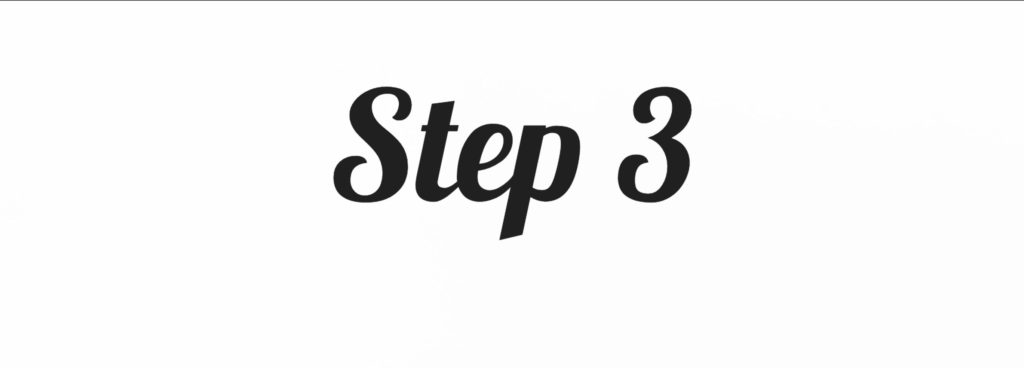

3. Choose What You Know Well and Find Interesting to Blog About



So again do some research about blog ideas you have. And remember a blog doesn’t have to be all writing. Many blogs are mostly pictures and videos. Some websites are just about products and that can work too.
When you think of something you like, for example, skydiving. You can look up blogs about skydiving and start to see how you can create content about the topic you’re interested in creating a blog around.
I recommend reading many things about your blog topic that you’re thinking about starting a blog about. Books, blogs, articles, videos, you name it. Educate yourself on the subject and become an expert. Figure out how to become a blogger expert on your topic. NEVER copy paste someone elses work. It’ll be easy at first, but it will hurt you down the road. Become your own expert on something for your blog and future readers. Then you can write from what you know and it’s yours and you can own your blog.
The best place to get ideas is from real life whether it’s your personal experience or whether you interview someone that went through the experience you want to be a blogger about.
This will help you develop unique and dynamic content that your readers will eat up as your blog grows!
Once you have a pretty good idea of your topic, the research you’ve done will help you come up with something unique and creative the domain name of your blog.
(Don’t be afraid to choose the wrong name.) You, your blog, and your content will grow and change over time.
There are many successful blogs that start out in one topic but migrate to another with time.
If your topic is broad enough but specialized enough you will have sub-topics that easily make sense in your blogging niche.
The worst thing you can do to yourself is be paralyzed by indecision.
Pick a topic, pick a name, and get started on your blog!
The more time you wait, the more you could have been growing your blog but didn’t. (Full disclosure: I wish we would’ve started earlier, but you don’t know what you don’t know and hindsight is 20/20)
If you’re really worried about it just make it your own name and then you can make it about whatever you want whenever you want. www.[ insert your name here ].com


4. Choose a platform for your blog



I recommend WordPress for this.
With this Bluehost link, it’s literally as easy as a click and you’ve got WordPress at no extra charge.
Another reason I like WordPress is that the majority of the internet is using WordPress. This means that WordPress plugins are up to date and mostly hassle-free for bloggers.
WordPress has been around for a while so they have developed their platform and worked through many bugs and issues.
Since a lot of sites use WordPress there are an equal amount of engineers creating WordPress friendly themes and plugins that make your life as a blogger much easier.
Also, there is a ton of helpful information just a google search away. There is a massive amount of youtube videos and content written to help WordPress users get things done on their blogs.
If you happen to run into a problem or can’t figure something out, you can literally do this: Google search: “How do I (problem) WordPress” and I’ll wager that you will get a large number of free resources and answers to guide you to your WordPress solution for your new blog.
Other platforms are not bad and have their upsides, but in my opinion, there are less free good resources to help you get done what you want and run as smoothly as what you might find on WordPress.
For me, it is a matter of convenience.
I like the resources I have found for WordPress on my blog. They have been nice, up to date, work seamlessly, and are reliable.
Other platforms and resources for them might not be as convenient or caught up with the curve as they just don’t own enough of the space yet.
With other platforms, you may have a little more freedom to customize and create a look outside of the box if you think that might be more your thing and if you want to spend more time figuring it out. If you like the idea of website development then you might like that.
Bluehost will let you use other platforms for your blog, so don’t worry about that.
(If you just want to start a blog quickly and want the fast track, Bluehost one-click WordPress option is quite easy)
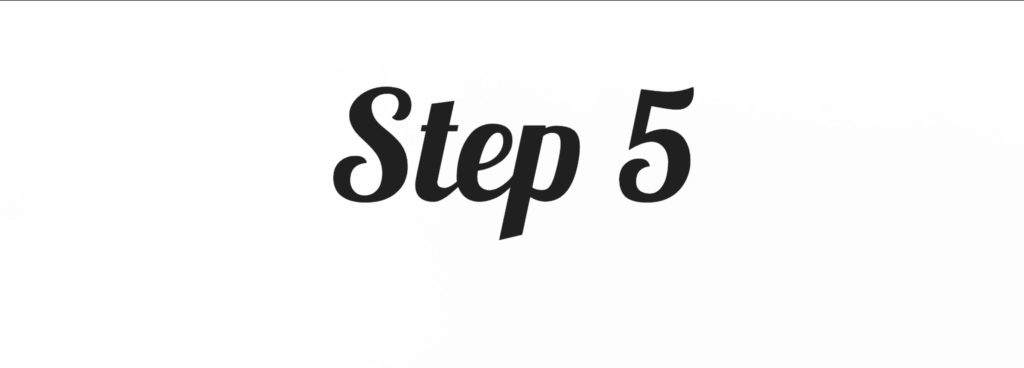

5. Design Your Blog
In my opinion, this part was not my favorite TBH.
When you’re learning how to start a blog, you don’t think about how much designing and development you have to figure out if you want your site to look and feel professional.
Thankfully, there are a good amount of themes to choose from but even with themes, there is a fair amount to figure out on your own.
I’m a writer, not a designer, but through the process of starting a blog myself and designing it myself, I learned valuable WordPress skills and I’m happy that I did it.
If you don’t have time to design your own blog I recommend hiring a WordPress developer.
There are a good amount of freelancing sites now that have many freelancers to choose from and the sites usually make it fairly easy for clients to find freelancers and protect them during the payment process.
If you want to find a good freelancer to help create your WordPress blog look at these important things:
- Look at their reviews. If they have a bunch of glowing reviews they probably will do good on your project as well.
- Look at how much they charged other clients and how consistently they charged the price they are asking for. You can learn a lot by going through their reviews and save yourself time in the interview process.
- If they know what they are doing and talking about they probably will have clients lining up to work with them so they might be less likely to worry about impressing you in the interview process. Freelancers interview every day. More than likely they are looking to shorten the interview time. It’s time and work they don’t get paid for. Look for the freelancer that isn’t that interested in “wowing” you upfront, but still has amazing reviews and commands a decent price.
- Cheap work is easy to find and you might waste money by going cheap. You might be able to find a lower-priced freelancer with amazing reviews, but more than likely if it seems to good to be true, don’t waste your time. Go for the freelancer that is interested in giving you a great product, not the one that’s looking to “wow” you in the interview. Some high-quality freelancers won’t even go into a free interview and won’t offer any free samples. These freelancers most likely have a very good experience and profitable ideas for your business.
- Look for samples on their site.
- Look to see if they have established their own sites.
- Look to see how many hours they’ve worked and what each job outcome looks like.
- Try to stick within your budget and get someone that looks excellent. Don’t try to get the lowest price possible because you’ll likely lose their interest and they won’t enjoy working with you or look to help you out again.
If you are going to start your blog and DIY, one of the main things to decide and easier things to do is to choose a theme.



Even though themes are easily loaded and switched around the theme you choose is very important for your new blog and gives your readers a “feel” for your site’s personality.
The cool thing about WordPress is that there are A LOT of free themes to choose from and you may find a free one that you love.
Security Tip- (When you choose a theme look to make it secure by hiding it from the public which theme it is.)
Not to worry though. If you can’t find one you love, you may want to purchase a theme as they come with other benefits, but they are very affordable.
I recommend writing a blog post and loading the post and then going through different themes to see in real life which theme feels the best to you.
It was easy for me to load one and see right away whether I liked it or not.
This is also a good time to look up 10 or more blogs you like so you can start to see what your options are, what you like, and what maybe you don’t like. I know this process was very helpful for me when choosing a theme.
By looking at other blogs I realized I didn’t like crazy colors, that I liked something more simple. I was looking for a simple plain background.
It would have been hard for me to picture what I liked if I hadn’t gone through other inspiring blogs to see my options.
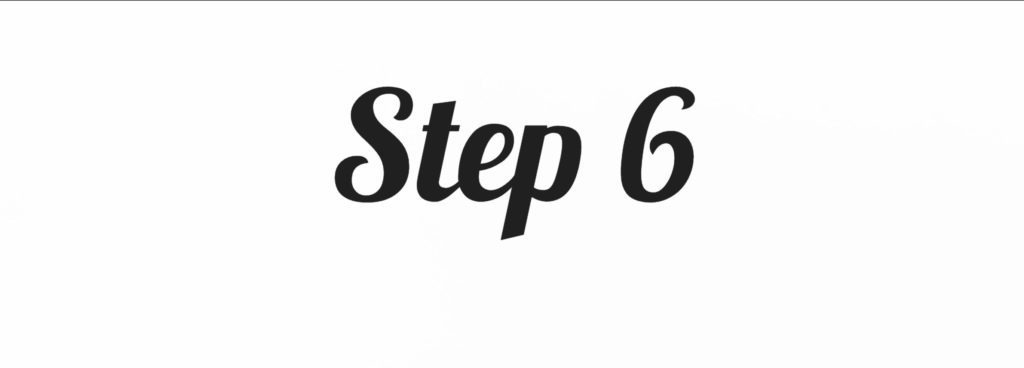

6. Create The Necessary Pages For Your New Blog (Contact, Home, About Us, Disclaimers, Privacy Policy)
As you are learning how to blog you will see that a post is your traditional blog post, similar to this one.
But your pages are more like foundational pieces of your blog site, examples: About Page, Contact Page, Home Page.
These will be tough to figure out, but going through the necessary process and checking them off one by one right away will help you choose your design and theme for your new blog business.
If you are looking just for an outlet to write and you have no interest in promoting your content right away then the more fun and creative process is to procrastinate these pages. If you want to make money asap with your blog these will be blog posts to tackle sooner rather than later.
I emphasize, if you want to promote and monetize your blog and create side income or full-time income for yourself, you will have to make these pages.
In today’s savvy internet culture, readers and browsers look for these pages. (Affiliate programs do too.)
After reading some good tips on your posts the reader is going to get curious, “who is this person writing these things for me.” As emotional and social beings we long to connect with each other. A great way for you to connect with your readers and for them to connect with you is to make a great and personal “About Us” page.
You want to stand out from your blogging competitors, so you’re going to want to make it welcoming, inviting, personal, fun, and somewhat vulnerable.
Naturally, you’ll tend to steer away from being vulnerable with your audience on your blog, but in doing so you’ll be like everyone else and they won’t connect with you as well.
In building a brand, one key trait is to be unique. And only you can be you 🙂
At the same time you don’t have to share EVERYTHING on your blog with the world right away. Just share things that you’re comfortable sharing. Share struggles and fears, but share also how you overcame them.
You never know when one of your visitors is struggling with something similar to you and how reading your story can help encourage them and pull them out of the fog.
Every part of your site can be made to feel more inviting, professional, and warm. Especially your Home page.
Think of your website like a house with many rooms. Your home page is the part of the house that has the most doors and the most possibilities for the visitor to look around.
Another way to view the home page is like a place to reset. They might get lost down some corridors and hallways into your blog area. By being able to click the home button at the top they know they can start over and find whatever they are looking for next.
You might be thinking you want to venture off the beaten path and make these pages different or not at all. I wouldn’t recommend this. With these pages, visitors have been “trained” to expect this sort of layout and you will make your site less user-friendly by not following the traditional layout.
You don’t want to copy anyone’s about us page, but you definitely want to make your own if you intend to share, promote, or monetize your content with your blog business.
Creating the traditional layout pages can be tedious at times, but in the long run, you’ll be glad you did. And your blog will be glad too.
Blog Tip- Make your blog unique, but keep your traditional pages inside the user-friendly box.
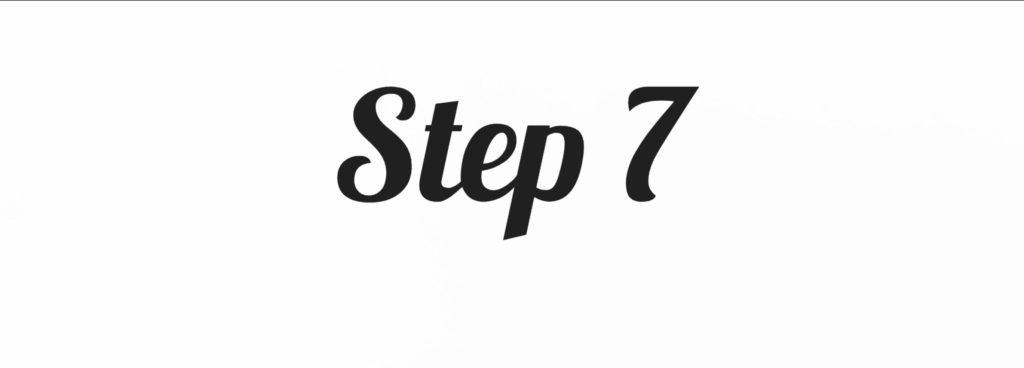

7. Create a Publishing Routine that Helps You Promote Your Blog Content



You don’t have to write at the same time every single day. You don’t have to publish at the same time every month, but developing a habit has been proven time and time again to be reliably helpful as you successfully learn how to start a blogging business.
You will have to figure out what works best for your specific schedule and what is a good undistracted time for you to create.
Here are some helpful habits for the creative blogging process:
- Don’t wait for inspiration
- Write down your blog ideas when they come to you, not later
- Make time to create
- Keep a blog idea journal
- When you start a blog post make a quick outline or you’ll forget your main points
- Figure out what tools work best for you for blogging consistently
- Work on your main blog points and the words will follow
Don’t wait for inspiration to come out of nowhere.
You have to learn to just sit down and create content for your blog. If you wait for inspiration you will never actually create anything for your blog.
You may feel inspired from time to time or maybe even a lot at the beginning of your blogger journey, but as time wanes, you might find it more and more difficult to just create.
It’s best to just force yourself to create and do research to figure out what you don’t know and manufacture inspiration of your own.
Write your ideas down the moment they come to you. Don’t wait until later.
Inspirational thinkers including music artist have developed their own routine for recording their creative ideas, whether they are out with friends, at work, driving, or awoken from a dream.
For me, I have a notepad on my phone that I use a lot, and I also like to use google docs.
Especially for blogging. I’ll be in the middle of creating a blog post and I realize a title for another blog post I’d like to make and at that moment I take 15 seconds. I open a brand new google doc, type the title, and close the google doc. (It takes seconds, and they are valuable.)
I don’t want to take away from what I am writing, especially if I’m “in the zone,” but I also have been creating long enough to know that if I don’t write it down right now, later on tonight, I’ll get this feeling that I had an idea BUT I HAVE NO CLUE WHAT IT WAS! GASP!
It is honestly one of my LEAST favorite feelings in all the whole entirety of the universe…I’m being slightly dramatic, but for real…I hate it.
So now, instead of thinking to myself “oh that’s a good blog idea. I’ll write it down later or tonight before bed,” NOPE! Gotta find something to write it on now.
And if worse comes to worst you can always write it on your arm or a napkin and stuff it in your pocket for later.
If the internet crashes I’ll lose all my ideas, but for now, at least they are stored somewhere.
Make time to create.
Just like inspiration won’t come knocking on your bedroom every day, “Hey! It’s time to create this amazing idea I have for you!” having time to create won’t be some magical luxury that makes itself available to you out of nowhere.
When you are starting a blog, you need to make time for you to create blog content.
There are many thoughts on what time of the day is best for your creative mind to flow right and make things happen.
For me though, I write at all times of the day. I write after I do my wake up routine. I write midday. I write in the evening. It’s 8:37 pm right now and I’m writing. For me it really just depends on the day and when I can make time.
For me creative success is as simple as this simple little question:
Yes: Success!
No: Failure!
That works for me. It might not work for you!
I tried all the other tricks; write a certain number of words a day, write a certain amount of time a day, write at a certain time every day. It just wasn’t working for me.
After years of trying different techniques I learned or read about on blogs and elsewhere, I just started to tell myself, I just have to write, I just have to write.
And what I found was that just by starting to write I would usually get into a rhythm and end up writing a good amount if I sat down just to write. I didn’t have any word constraints or time restraints.
I could quit if I wanted or write if I wanted, but I didn’t have any prisoner- like goals to accomplish “or else.”
I found this to be very freeing for me and it made the process of writing less work and more fun.
Some days it is still hard to start, but once I do it is quite enjoyable most days.
You must figure out what works best for you so that you will create at least a bit every day if you can.
Keep a blogging journal.
I think some people will really like this.
Keep a journal of your thoughts and great ideas, that way you always have something to look to for inspiration.
I have tried the regular journaling practice and it hasn’t helped me personally, but I have experienced fun moments of reading old journals and being shocked that I thought something or did something and went “oh wow, I don’t remember that!” Or “wow, I’m glad I wrote that down, that’s very cool.”
So, I would especially think for some people that a journal would be a very good idea and would be very helpful if you become a blogger.
When you start a blog post make a quick outline or you’ll forget your main points.
This step is HUGE for me in my blogger routine.
The day I started to make this is a habit in my blogger life is the day I shouted for joy. OK so I probably didn’t literally shout for joy, but I cannot tell you how helpful it has been creating an outline of my main points first thing.
For me, this is no longer some BIG TEDIOUS brainstorming session.
No, this part usually takes me a few seconds and if I really can’t think of good ideas I’ll do a quick 5 minute google search. I may edit or change parts of the list as I go along with the post, but that’s about it. I try to keep things in my blogger process simple and effective.
As you grow your blog you’ll develop your routine and best habit practices and you’ll enjoy them too, hopefully.
With my outline of the main points I want to hit the blog almost writes itself.
You’d be surprised how often your writing and you draw a blank. My outline is what I look to any time I run out of words to write. I scroll up or click over to my outline or inspiration and look to see where I’ve been and where I’m headed.
This helps me stay on track and cuts down my blogger work from home time down dramatically.
Also, when you first think of the blog post you want to write all these great ideas fly through your head of what it should be made of. I’ll bet you that when you come back to write about it, you completely forget what those great ideas were.
With an outline, you can step away from your post and pick up easily where you left off just by looking at what you have written and your list of what you want to write.
I couldn’t tell you how many times I’ve been distracted from this exact post or had to walk away or put it down or go to sleep while I’ve been writing it, but every time I come back I just go to my outline and see what I’ve done and I know where I want to go and I feel good about it.
Outlines could just be the main ideas or some content too. It really depends on what is most helpful for you.
You don’t want to make a habit of walking away from your piece in the middle of a thought. You want to do your best to find a good place to stop that will be easy to pick up from later. Finish your thought or your main idea and then get up.
Life is too complicated so it’s best to plan for interruptions because they will happen more often than you think!
Therefore, make an outline and you’ll be so glad you did!
Figure out what tools work best for you.
As you start your blog, you will find that not every tool offered to you is necessary, you will love some, and you will ponder others.
For instance, for me, some of my greatest tools outside of Bluehost, are Google Docs, outlines, and Grammarly.
The moment I found google docs changed my freelance writer life. That has carried on to all my writing projects, including my blogger projects.
And as I expressed above, I am so fortunate to have developed a habit of outlining.
For some people, long brainstorming sessions are big for them and they develop these big ideas brainstorm bubbles on whiteboards. I never needed that nor did I enjoy it. For me, it was a waste of time. It doesn’t help my brain simplify the tasks I need to do to get the blog done.
Your tools are going to be best used to partner with your working style to get the blog done in a fun but effective manner. So find blog tools that help you get the job done faster and better.
Another tool that I enjoy having around is Grammarly.
It took me a long time to give in to the Grammarly crowd, I thought, “eh, I’m a good writer. I don’t need it. It’s just another thing to bother me.” But to the contrary, I love having it. Best part! It’s completely free! They have a paid version too that can give you extra insight into your writing and how it can be better.
I would recommend Grammarly to anyone who writes and bloggers. It’s a no brainer. I would especially recommend their paid version for bloggers and writers where English isn’t your first language. Even if English isn’t your first language, the paid version of Grammarly will help you with English in a way that spell check can’t.
Grammarly checks not just spelling, but the use of commas, periods, punctuation, and word choices that makes it more professional and readable in English, and English doesn’t have to be your first language for you to make a living as a blogger or writer in English. Between Google, Grammarly, and freelancers you can get it done and get paid for what you do!
For images and editing we use unsplash, pixabay, mailchimp, and canva.
Work on your main blog points and the words will follow.
Creating main points at the beginning of creating new content is a must for me personally.
I have main ideas or have found them and then when I get down to it the words flow from the main idea of each point. If I don’t write them down I easily forget them as I go from the beginning to the end of the creation of the blog post.
I highly recommend finding your main points first and writing them down or having them somewhere so you have something to look back to when you lose your place and then you don’t have to struggle with trying to remember each point you wanted to discuss.
In conclusion, you have to figure out what blogger tools are best for your specific writing goals and needs.
Figure out what works best for you and repeat it on a daily to weekly basis.


8. Make Sure to Create Great Photos That Feel Professional on Your Startup Blog
Images are important to your image, tone, and feel of your blog.
Blogs without images just don’t perform as well.
It is sad but true.
Blogs with images, especially, unique, fun lively ones tend to give a more professional feel and tone to your blogger community.
We use Unsplash, Mailchimp, and Canva to get great looking customized photos and texts FO FREE.
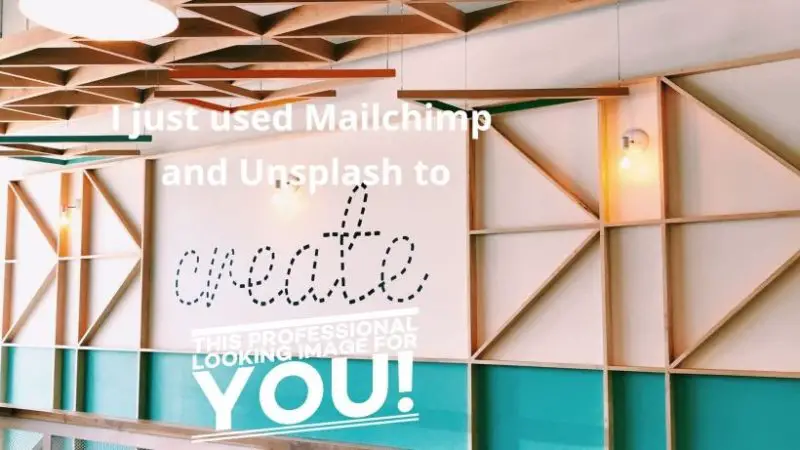

Yes, the image above is cheesy. But it proves a point. It only takes a few moments to make an image like this and load it up to your blog.
And it is worth it in the long wrong to start having images for your viewers and for Google to find.
This means you don’t have to spend hours on photoshop or hundreds of dollars on stock images or developers.
While you are blogging, especially using WordPress. You will start to get a feel if you want to start offering your freelance services as a developer, more specifically a WordPress developer.
If you do decide to do this, I would definitely recommend using Adobe Photoshop and other Adobe Tools to offer amazing services to clients! My sister has her own photography business and she uses Photoshop non-stop on her projects and couldn’t do her side hustle without it.
In learning how to start a blog, you might just find out that you want to be a WordPress Developer as well. If this is your case, I recommend getting more deeply involved with WordPress and checking out their professional plans as well as Adobe and their Pro Plans.
You can start with WordPress FREE, but if you are going to be a serious developer (freelancer) that makes good money, you’ll want to at least go with Premium. If you are designing for eCommerce store clients, you’ll want to know how to use the eCommerce plan.
While you’re starting out and learning how to become a blogger you might not need to spend money on professional tools to make great, unique amazing looking photos that give your blog the feel and tone you want it to have.
If you decide to, that’s completely up to you, and I’ve laid out various options here, but most of all just make sure you put it crisp looking videos and photos where you can, but don’t overdo it and make sure that it makes sense for your startup blog niche.
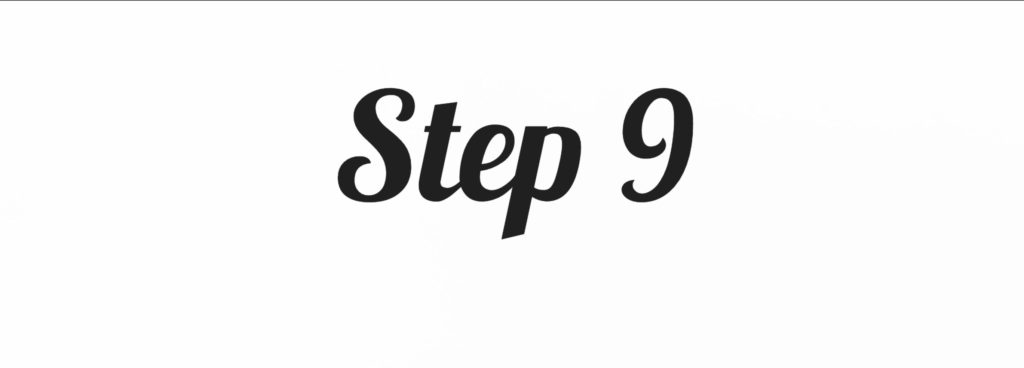

9. Devise a Strategy that Will Make your Blog Content POP!
The idea of “ blog content strategy” can mean a bazillion things. Some of them more technical than others. But as you start your blog and grow it your content strategy will grow and change with time as well.
In this strategy, we will focus on these things briefly: (this is in no way exhaustive)
- Some technical stuff
- Make your content readable
- Make your content POP!
- Understand your audience
- Feed your audience
Some technical stuff
This would be like planning and organizing. Some people love organizing. Not me. I love “being” organized, but I do not enjoy the process. For me it is a necessary discipline that I have learned with practice and time.
I use my phone, notes, google docs, email, and my wife to help me stay organized
You need to figure out what organization tips and tricks will work best for you to keep you going and on task with your content strategy for your blog.
I don’t have a set schedule. My schedule is actually very fluid and for the most part I work to keep it that way. Then I can say yes or no to things freely.
That’s not for everyone. Some people LOVE their schedule and how dare you live without one haha, but if you need a schedule I recommend a tool like Trello or other free scheduling tools.
Trello is nice and neat and it’s set up to be an easier, smarter interactive to do list with alerts and calendars to help you stay on schedule and not forget things. Trello really helps with a team. You can throw up a to do and the teammates that are in the need to know will know instantly. No need to schedule a meeting. And if you need to schedule a meeting with certain teammates and not others you can do that too. Imagine Trello as a virtual office that runs on smart sticky notes and chats.
Figure out what technical tools you need in order to make your blogger life continue to spin as you journey deeper in how to become a blogger.
Make your content readable
As you develop your blogger skills you will want to develop a skill that should be second nature to you as you create and write content.
I CANNOT overstate how under-stressed this point is. Make your content readable.
This means your content needs to be written at a low reading level. Be aware of your audience of course, but for the most part writing at an eighth-grade reading level is high enough and will be more accepted by your blog traffic than if you wrote to them at a college level or higher.
As a blogger write shorter paragraphs. Sometimes just write just one sentence, this will help your audience read through all of your material. Most web visitors naturally skip big BLOCKS of text and skip to the more scan-able texts.
Write simple and make it easier for your audience to digest your content. Use the Flesch Readability calculator and try to maintain a score above 70. Keep it fairly easy at least for all your readers.
Make your content POP!
As a blogger, how does one make content POP?
We already went over images and how important they are to you as a blogger and how they make content have a completely new feel and how easy they can be to create.
But now I’m talking about your text.
It is actually REALLY EASY and in time with practice, you can become very good at it.
You might not even think about it but I’m doing it right now.
That’s right just bold, italicize, color, highlight, capitalize, or underline your text in the right places, at the right moment and this will help your content POP for readers to digest your blog content more easily!
Don’t overdo it and learn how to do it masterfully and it will be a very useful skill as you start your blog.
Understand your audience
Take your time. Do your homework. Get something like Google Analytics and get to know your audience.
Listen to your readers’ comments not just on your site, but on other sites where you can find them as well.
Find them on chats, forums, comments on products, find them wherever you can and pay attention to them, their words, and how they talk about what they like and what they don’t like.
When your audience responds to what you do, take note and respond in kind on your blog.
Feed your blogging audience
When you find out what your audience likes, doesn’t like and what they want, give it to them!
Find out what your audience is asking and answer those questions in a blog post.
Find out what their worries and doubts are and try to find solutions for them that you can offer on your blog.
Try to help your audience.
Find out what they want to know as well as be savvy enough to understand what they need to know and give it to them
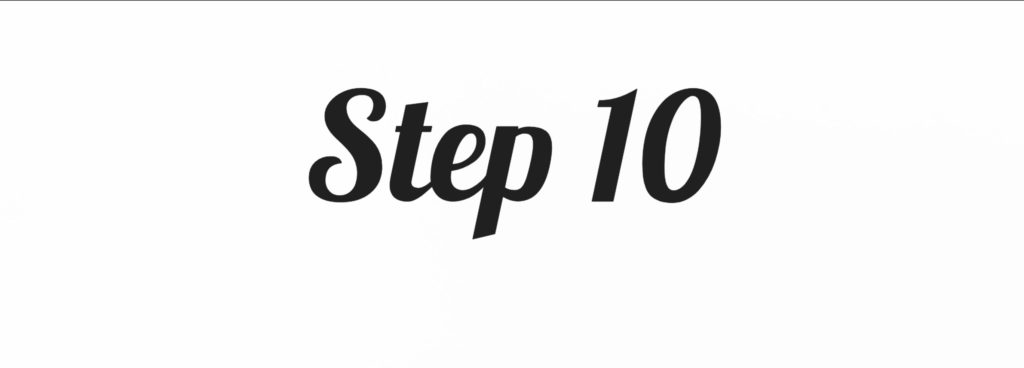

10. Learn to Promote Your Blog Content Through as Many Channels as Possible (Without Being SPAMMY!)


This one is a toughy.
You want to promote your blog content as much as you can, but you DEFINITELY want to be cautious about being too Spammy! Yikes! (No one likes spam, except Spammers.)
In other words, don’t be that guy or gal!
You know what they are like. They pop into your forum out of nowhere. They don’t add any value to the convo. They just post a link to WHO KNOWS WHAT?! and then disappear like a fart in the wind (they literally make a fart noise as they vanish into a cloud of green dust laughing maniacally.)
But in all seriousness, as you learn the best practices of blogging you will quickly realize that a successful blogger is one that spends A LOT of time promoting their own blog and finding ways to have others promote it as well.
But don’t worry!
You don’t have to be spammy to do this well!
You actually get to be helpful and build meaningful blogger relationships.
That’s the best way to do it anyways.
Find ways to join conversations all over the internet.
Be a kind, polite, and nice person.
BE HELPFUL! BE HELPFUL! BE HELPFUL!
It’s that simple.
Click to TweetDo you get the point?
Don’t post your own stuff right away unless it makes sense. Take time to answer questions, pose meaningful questions, and add value to the conversation.
As you leave a good impression on others, when the right time comes you’ll be able to recommend one of your posts that is helpful to the group and generate some traffic for yourself as a blogger.
In today’s social media world you will find lots of opportunities to use Twitter, Facebook, Pinterest, Instagram, Quora, and other platforms to generate some more traffic for your blogger time.
With social media, your best tactic is original and unique looking content.
Try creating photos with text that are eye-catching.
Try to make your photos professional looking. Remember that you are competing with the millions, no, billions of other eye candy photos that pop up every millisecond on social media.
Get creative, find groups and pages on social media that are interactive and where you can cut through the white noise to 1,000 to 10,000 active users all at one time.
Be careful not to give into the temptation to use spam tactics. Google is smart and they will blacklist you. Even if you get your link posted on 1000 pages in one day, your ranking will go down so fast and your affiliate programs won’t appreciate it (and may drop you) and if you want to be a respected blogger you will only be shooting yourself in the blogger foot. Don’t shoot yourself in your blogger foot.
As you are learn how to start a blog, just make sure you avoid being spammy and make sure to spend time promoting yourself as a well-respected blogger by being helpful and adding value wherever you bring your presence.
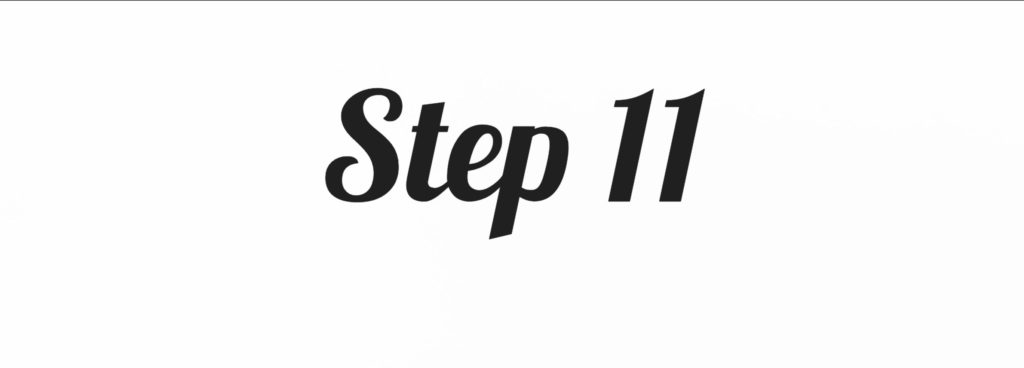

11. Learning How to Start a Blog Takes Work (Don’t Be Fooled. This is NOT a “get rich quick” scheme)


Let me repeat: learning how to start your own blog will take a good amount of work on your part.
But don’t despair!
That work will be worth it. Even if you fail dramatically, which I have read about others doing. You will have learned something new about yourself. Or you will have gained some new skills for the work from home, freelance market place.
Possible skills you can immediately put to use and earn money as a freelancer from starting your own blog:
- Blogging
- WordPress Development (If you used WordPress)
- VA (Virtual Assistant for clients building their own sites)
- Writing
- Marketing
- Copywriting
And this is not an exhaustive list.
Taking the time to start a blog could benefit your future in ways that you can’t see yet.
Don’t worry that it will be work to do what you dream of doing.
Anything worth doing will take up your time and energy.
And whatever you decide to do, don’t be afraid to tell the world:
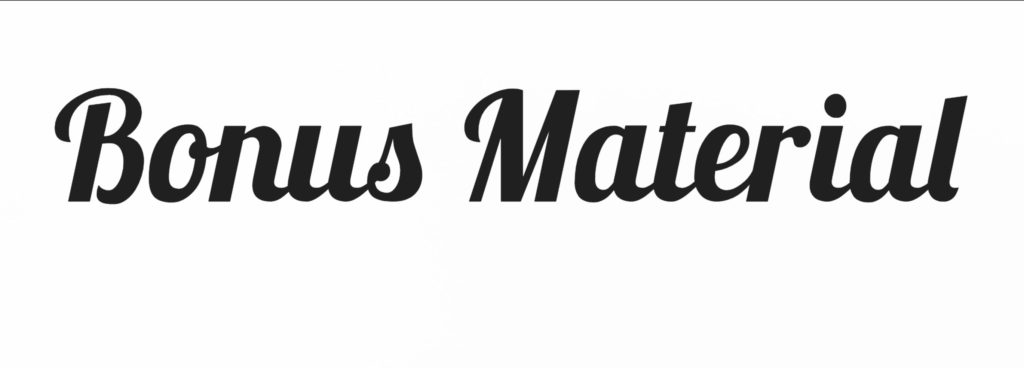

12. BONUS: Some Plugins We Recommend
Here’s a list of Plugins we recommend:
- Rank Math SEO
- Content Views
- Social Snap
- Black Studio TinyMCE Widget
- Hummingbird
- Cookie Notice
Rank Math SEO is like SEO made easy for bloggers on WordPress. I’m not sure if it works for other platforms, but WE LOVE IT!
Content Views allows you to make extra widgets for any page or post on your blog fast and easy!
Social Snap allows you to have beautiful and professional social share buttons and extra control over what they do and how the share comes out.
Black Studio TinyMCE Widget Crazy long weird name; GREAT plugin. I have yet to take total advantage of it, but it is amazing. One of the features we love about it right now is the ability to create “Paragraph” content in my header, footer, and sidebar. Game changer!
Hummingbird speed up your site, helps you with caching and performance optimization. If your users are going to have a good time while they are with you, things need to run fast.
Cookie Notice is a really easy way to let your visitor know that your site uses cookies. Which is something that almost every site should do if they use cookies.
More Goodies:
Become a better Writer in 30 Days or Less
Make Money Blogging with Affiliate Marketing
How to Write a Book: 32 Tips | Your MASSIVE Guide How to Write a Book
Work from Home Job Opportunities
How to Make More Money Blogging
Our #1 Way to Make A Blog Profitable in Year One
Tell us if you’re learning how to start a blog.
Leave a comment and a link to your blog.
If you started a blog today what would it be about?
We hope you enjoyed: How to Start a Blog in 11 Simple Easy Steps in 2021

